












Bhavna Batra Managing Editor CEO Weekly UAE
CEO CEO
In recent years, Saudi Arabia has made significant strides in transforming its healthcare sector, driven by Vision 2030’s ambitious goals. Historically facing challenges typical of developing nations, such as limited infrastructure and healthcare professional shortages, the Kingdom’s focus on healthcare under Vision 2030 marks a pivotal shift. The National Transformation Program (NTP) has set specific targets to enhance hospital capacity, improve healthcare delivery, and foster innovation in medical research and technology.
Central to Saudi Arabia’s healthcare transformation is the expansion and modernization of medical infrastructure. Extensive investments have led to the construction of new hospitals, clinics, and specialized medical centers equipped with state-of-the-art technology. Concurrently, the adoption of electronic health records (EHR) and telemedicine services has revolutionized patient care, making it more efficient and accessible, particularly in remote areas.
Investments in medical education and workforce development are integral to sustaining this transformation. The establishment of new medical schools and partnerships with international institutions aims to bolster the healthcare workforce’s capabilities. The Saudi Commission for Health Specialties (SCFHS) ensures high standards through rigorous certification and continuous professional development programs, nurturing a skilled healthcare workforce capable of meeting evolving demands.
Vision 2030 also prioritizes public health and preventive care initiatives. The Ministry of Health’s campaigns promote healthy lifestyles, combat chronic diseases, and enhance maternal and child healthcare services, significantly improving population health outcomes. Simultaneously, Saudi Arabia is emerging as a hub for medical research and innovation, with institutions like the King Abdullah International Medical Research Center (KAIMRC) pioneering advancements in AI, big data analytics, and personalized medicine.
The private sector’s active participation through investment and collaboration further enhances healthcare quality and accessibility. Public-private partnerships (PPPs) facilitate the integration of advanced medical technologies and practices, complementing government efforts to achieve healthcare excellence.
As Saudi Arabia continues its healthcare journey, it is poised to set regional benchmarks for healthcare excellence and innovation, positioning itself as a leader in the Middle East and beyond.
Enjoy the read!
Sincerely,
Bhavna Batra Managing Editor CEO Weekly UAE
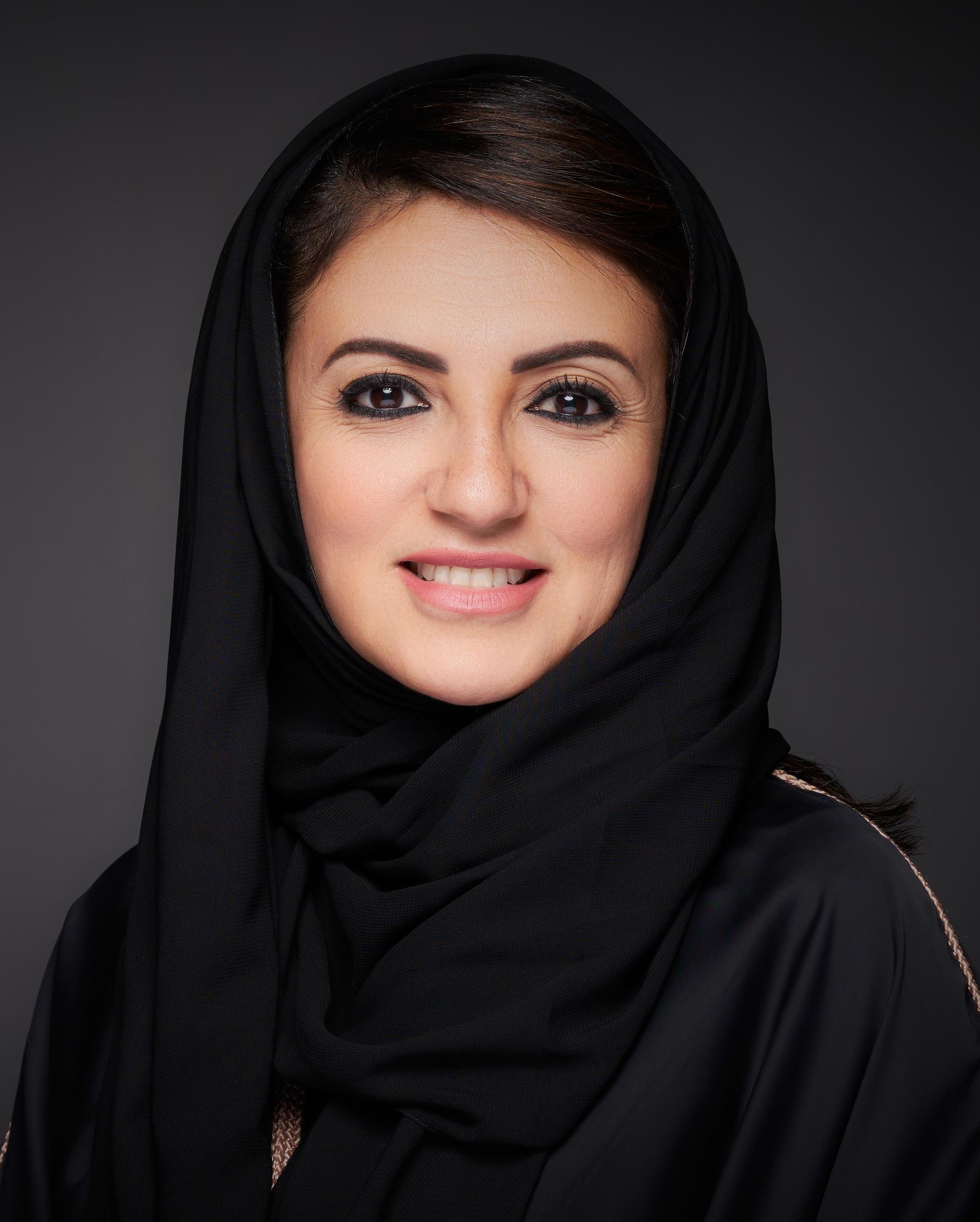


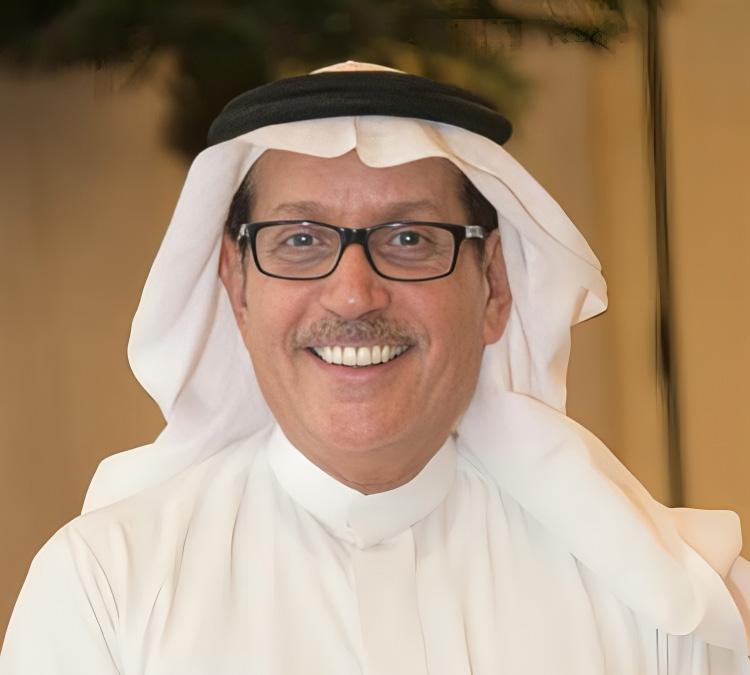

The healthcare sector is undergoing a significant transformation, driven by technological advancements, changing demographics, evolving patient expectations, and the enduring impacts of the global COVID-19 pandemic. These shifts are opening up new investment opportunities, making healthcare one of the most promising sectors for future growth. This article provides an in-depth look at the future of healthcare investment, exploring key trends, innovations, and market shifts that will define the next decade.
• Healthcare investment is on the rise globally, with spending expected to reach $10.059 trillion by 2022, according to a report by Deloitte. Several powerful forces are propelling the healthcare industry toward a data-driven, personalized, and preventative future. Here are some of the most significant:
• Technological Disruption: Artificial intelligence (AI), machine learning (ML), and big data analytics are fundamentally altering healthcare delivery. From AI-powered diagnostics and drug discovery to telehealth consultations and remote patient monitoring, technology is enabling more efficient, accessible, and personalized care.
• Aging Population: The global population is rapidly aging, leading to a surge in chronic diseases like diabetes, heart disease, and cancer. This creates a demand for innovative solutions for managing these conditions, extending lifespans, and improving quality of life.
• Value-Based Care: The healthcare system is transitioning from a fee-for-service model to a value-based model, where providers are rewarded for delivering better patient outcomes at lower costs. This shift incentivizes investments in preventative care, population health management, and technologies that improve care coordination.
• Consumerization of Healthcare: Patients are increasingly demanding more control over their health. This trend fuels the growth of digital health tools, wearable devices, and personalized medicine approaches, empowering individuals to manage their well-being.
Another key trend is the digitalization of healthcare. The increasing use of digital tools and technologies, such as telemedicine, artificial intelligence (AI), and the Internet of Medical Things (IoMT), are transforming healthcare delivery, improving patient outcomes, and reducing costs. According to a report by Accenture, the global digital health market is expected to reach $639.4 billion by 2026, growing at a CAGR of 27.7% from 2019 to 2026.


Emerging markets present significant growth opportunities for healthcare investment, driven by increasing wealth, urbanization, and health consciousness among the population. Countries like China, India, and Brazil are seeing rapid growth in healthcare infrastructure, driven by both public and private investment.
Global health challenges, such as the rise in infectious diseases and antibiotic resistance, require innovative solutions and international cooperation. Investment in research and development of new antibiotics, vaccines, and treatment protocols is critical to address these challenges.
Venture capital plays a pivotal role in nurturing healthcare innovation. Investing in startups that are developing breakthrough technologies or novel treatments can offer high returns. However, these investments also carry higher risks, necessitating thorough due diligence and strategic risk management.

Emerging makets: Where healthcare investment thrives amidst growth and opportunity
The changing healthcare landscape is creating a wealth of investment opportunities. Here are some of the most promising areas for future growth:
1. Telemedicine: The COVID-19 pandemic has accelerated the adoption of telemedicine, with patients and providers increasingly turning to virtual consultations. The global telemedicine market is expected to grow at a CAGR of 25.2% from 2021 to 2028, according to a report by Grand View Research.
2. AI in Healthcare: AI is being used to improve diagnostics, personalize treatment, and predict disease outbreaks. The global AI in healthcare market is projected to reach $66.1 billion by 2025, growing at a CAGR of 48.7% from 2018 to 2025, according to a report by Tractica.
3. Personalized Medicine: The growing demand for personalized care is driving investment in areas like genomics, precision medicine, and pharmacogenomics. The global personalized medicine market is expected to reach $3.1 trillion by 2025, according to a report by the Personalized Medicine Coalition.
4. Healthcare Real Estate: The aging population and the growing demand for healthcare services are driving investment in healthcare real estate, including hospitals, medical offices, and senior housing. According to a report by CBRE, healthcare real estate investment in the U.S. reached a record $13.3 billion in 2019.

These megatrends present a wealth of investment opportunities across the healthcare spectrum. Let’s delve into some of the most promising areas:
• Precision Medicine & Genomics: The ability to tailor treatments to an individual’s unique genetic makeup holds immense potential. Investors are eyeing companies developing personalized medicine solutions, gene therapies, and next-generation diagnostics.
• Digital Health & Telemedicine: The proliferation of telehealth platforms, wearable health trackers, and mobile health apps is transforming care delivery. Investments in these areas are expected to grow exponentially as patients embrace virtual consultations and remote monitoring solutions.


• Big Data & Analytics: The healthcare industry generates vast amounts of data. Companies providing tools to analyze this data for insights into disease patterns, treatment optimization, and population health management are well-positioned for growth.
• Chronic Disease Management: As chronic diseases become more prevalent, there’s a growing need for solutions that help patients manage these conditions effectively. Investors are looking at companies developing chronic disease management programs, remote monitoring tools, and medication adherence solutions.
• Mental Health & Wellness: The growing awareness of mental health issues is driving investments in companies offering teletherapy solutions, digital mental health platforms, and mindfulness apps.
• Artificial Intelligence in Healthcare: AI has the potential to revolutionize healthcare across various aspects – from medical imaging analysis and drug discovery to chatbots for patient support and virtual assistants for doctors. Companies developing and applying AI solutions in healthcare are attracting significant investor interest.
Artificial Intelligence (AI) and Machine Learning (ML) are at the forefront of transforming healthcare. These technologies are enhancing diagnostic accuracy, optimizing treatment plans, and improving patient outcomes. For example, AI algorithms can analyse medical imaging faster and with greater accuracy than human radiologists. Investment in AI healthcare startups has surged, reflecting the potential of these technologies to revolutionize various aspects of healthcare.
The COVID-19 pandemic accelerated the adoption of telemedicine, breaking down longstanding barriers to virtual care. As healthcare systems and patients alike recognize the convenience and efficiency of telemedicine, investment in digital health platforms continues to grow. These platforms not only improve access to care but also reduce costs, making healthcare more affordable and accessible.
Wearable technology has transitioned from fitness tracking to sophisticated health monitoring, equipped with sensors that track vitals like heart rate, glucose levels, and sleep patterns. The data collected by these devices offers invaluable insights into preventive health, potentially reducing the need for invasive treatments and lowering healthcare costs.
The future of healthcare investment extends beyond traditional medical companies. Here are some emerging areas attracting investor attention:
Healthcare Infrastructure: Investments in building modern healthcare facilities, upgrading medical technology infrastructure, and expanding access to healthcare services in underserved communities are crucial for a robust healthcare ecosystem.
Wearable Technologies & Biosensors: Wearable devices that track vital signs, sleep patterns, and activity levels provide valuable data for personalized health insights. Companies developing innovative wearable technologies and biosensors are ripe for investment.
Virtual Reality (VR) & Augmented Reality (AR): VR and AR hold significant promise for healthcare applications like surgical training, patient education, and phobia therapy.
Despite the promising outlook, healthcare investment is not without challenges. Here are some of the key issues investors need to consider:
1. Regulatory Complexity: The healthcare sector is heavily regulated, with rules and regulations varying by country and even by state. This complexity can make it difficult for investors to navigate the market and understand the risks and opportunities.
2. Data Privacy & Security: The increasing reliance on patient data necessitates robust data privacy and security measures. Investors need to assess how companies they invest in are addressing these concerns.
3. Regulatory Landscape: Regulatory frameworks need to adapt to accommodate new technologies and ensure patient safety. Investors should consider the regulatory environment for specific healthcare innovations.
4. Reimbursement Uncertainty: The shift towards value-based care is changing the way healthcare services are reimbursed. This uncertainty can make it difficult for investors to predict revenue and profitability.
5. High Costs: The high cost of healthcare services and technologies can be a barrier to investment. This is particularly true for emerging markets, where healthcare infrastructure is often underdeveloped.
6. Cybersecurity Risks: The increasing use of digital tools and technologies in healthcare is raising concerns about data privacy and security. Investors need to consider these risks when evaluating investment opportunities.
7. Integration & Interoperability: Integrating disparate healthcare systems and ensuring data interoperability are crucial challenges. Investors should favour companies developing solutions that promote seamless data exchange and improve care coordination.
8. Market Volatility: While healthcare generally offers stability, it is not immune to market volatility. Economic downturns, regulatory changes, and technological disruptions can influence market dynamics.
9. Ethical and Social Considerations: Investments in healthcare are uniquely sensitive to ethical and social considerations. Issues such as patient privacy, access to care, and ethical drug pricing are increasingly under scrutiny. Investors must navigate these issues carefully to maintain public trust and regulatory compliance.
The future of healthcare investment looks promising, driven by the shift towards value-based care, the digitalization of healthcare, and the growing demand for personalized and technology-enabled care. However, investors face challenges, including regulatory complexity, reimbursement uncertainty, high costs, and cybersecurity risks. To succeed in this dynamic and complex market, investors need to understand these trends and challenges and develop strategies that can capitalize on the opportunities while mitigating the risks.
As the sector continues to evolve, the most successful investors will be those who recognize the transformative potential of healthcare and act swiftly to harness its full value. The healthcare sector is poised for significant growth and transformation in the coming years. With the right approach, investors can play a crucial role in shaping the future of healthcare, improving patient outcomes, and delivering value to all stakeholders.
Design thinking, a human-centred approach to problem-solving, is increasingly being used to transform healthcare. This approach emphasizes empathy, creativity, and experimentation, enabling healthcare providers to design services, products, and experiences that better meet the needs and expectations of patients. In the rapidly evolving world of healthcare, the emphasis on efficiency and technological integration often overshadows the human-centric aspects of service delivery. However, the incorporation of design thinking into healthcare promises a revolution, prioritizing user experience and innovative solutions to age-old problems. This article explores how design thinking is transforming healthcare, by fostering a more empathetic, efficient, and effective system.
Design thinking, a strategy traditionally associated with the fields of graphic design, product development, and architecture, is fundamentally about understanding and solving complex problems in a user-centric way. In healthcare, this approach involves empathizing with patients, healthcare providers, and other stakeholders to design solutions that are not only technically sound but also user-friendly and emotionally resonant. It translates to putting patients and all stakeholders (clinicians, administrators, families) at the forefront of innovation.

The application of design thinking in healthcare can be broken down into five key stages: Empathize, Define, Ideate, Prototype, and Test. Each stage plays a critical role in ensuring that the final services or products achieve the desired impact.
The first stage involves gaining an empathetic understanding of the problem you are trying to solve, primarily from the perspective of those experiencing the issues. In healthcare, this might mean conducting interviews with patients, observing the challenges faced by nurses and doctors, or shadowing family members as they navigate the healthcare system. This step is crucial for uncovering real needs that may not be apparent through more traditional data collection methods.
B. Define
Design thinking is a non-linear, iterative process that involves five stages: empathize, define, ideate, prototype, and test. The goal is to understand the user’s needs and perspectives, generate innovative solutions, and iteratively refine these solutions based on user feedback. In healthcare, design thinking can be used to address a wide range of challenges, from improving patient experiences and outcomes to streamlining operations and reducing costs. By focusing on the needs and experiences of patients, healthcare providers can design more effective and efficient services and products.
Design thinking is revolutionizing healthcare by putting patients at the center of innovative solutions, enhancing both care and experience. “
The insights gathered during the empathy stage led to the definition phase, where the problem is stated in a human-centred manner. Instead of defining the problem through technical requirements or organizational needs, it is framed in a way that focuses on the user. For instance, rather than saying, “We need a more efficient patient record system,” one might define the problem as “Healthcare providers need a way to quickly understand a patient’s history to provide effective care.”
C. Ideate
With a clear problem definition in place, the next step is ideation, where innovative solutions are brainstormed. In this stage, no idea is too far-fetched, and quantity is valued over quality. For healthcare, ideation sessions might involve doctors, patients, IT specialists, and other stakeholders brainstorming together on solutions to improve patient care, reduce wait times, or enhance the accessibility of medical records.
Through design thinking, healthcare is being transformed with creative approaches that address complex challenges and improve patient outcomes, fostering a more empathetic and efficient healthcare system.
Prototyping involves turning ideas into tangible products or services. These prototypes do not need to be perfect but should be adequate to understand how they work in practice and how users interact with them. In healthcare, this could mean developing a new mobile app for appointment scheduling, a new layout for patient rooms, or even a new workflow for emergency department staff.
Test
The final stage is testing, where the prototype is implemented on a small scale to gather feedback and iterate on the design. This feedback can be crucial for understanding the viability of a solution in a real-world healthcare setting and for making necessary adjustments before a full-scale rollout.
1. Patient-Centeredness: The core principle of design thinking in healthcare is patient-centeredness. This means understanding and empathizing with patients’ needs, preferences, and experiences, and designing services and products around these insights.
2. Co-Creation: Design thinking encourages co-creation, involving patients, healthcare providers, and other stakeholders in the design process. This collaborative approach can lead to more innovative and effective solutions.
3. Prototyping and Iteration: Design thinking involves creating prototypes and iteratively refining them based on user feedback. This approach allows for continuous learning and improvement.
4. Holistic Approach: Design thinking considers the entire patient journey, from prevention and diagnosis to treatment and recovery. This holistic approach can help identify opportunities for improvement and innovation.
Integrating design thinking into healthcare leads to several significant outcomes. Tradi-

tional healthcare innovation often starts with a technology or product looking for a problem. This approach can miss the mark on what truly matters – the human experience and the needs of patients and providers. Design thinking flips this script by prioritizing user needs and fostering a culture of empathy and collaboration. Here’s how it benefits healthcare:
Improved Patient Experience: Design thinking ensures solutions address patient anxieties, frustrations, and needs throughout their healthcare journey. This can lead to increased patient satisfaction, improved adherence to treatment plans, and better overall health outcomes.
Enhanced Staff Efficiency: By streamlining
processes, workflows, and user interfaces, design thinking can make daily tasks easier for clinicians and administrative staff, freeing up time for patient interaction and reducing burnout.
Reduced Costs: Efficient processes, better communication, and improved resource allocation can lead to significant cost savings for healthcare institutions.
Innovation & Creativity: Design thinking fosters a culture of creative problem-solving and encourages collaboration between diverse stakeholders. This leads to a pipeline of innovative solutions addressing unmet needs within the healthcare system. Examples of Design Thinking in Healthcare Action
Here are some real-world examples of how design thinking is transforming healthcare:
Reducing Hospital Readmissions: A design thinking project at a hospital identified the main reason for patient readmissions was medication confusion upon discharge. They designed a simplified medication list with clear instructions and patient education materials, leading to a significant decrease in readmissions.
Improving Paediatric Care: A children’s hospital implemented design thinking to redesign its emergency department waiting room. They created a more playful and engaging space for children, reducing anxiety and improving patient experience.
Empowering Patients with Diabetes: A design thinking project partnered with diabetic patients to develop a mobile app that helped them better manage their condition. The app provided personalized self-care tools, educational resources, and peer support, leading to improved health outcomes.
While design thinking holds immense promise for healthcare, there are challenges to navigate:
Several successful applications of design thinking in healthcare illustrate its transformative potential. These include:
A famous case is the redesign of the patient experience in a leading hospital where designers shadowed patients from admission to discharge. They identified key stress points and redesigned processes to make the hospital experience more comforting and less confusing.
Another case involved designing a new handheld device for diabetics to monitor their blood sugar levels. By focusing on the actual needs and daily realities of diabetic patients, the company was able to design a device that was not only more effective but also easier and less intimidating for patients to use.
A children’s hospital used design thinking to streamline its admission process. By designing with empathy towards both patients and staff, the hospital was able to
reduce paperwork, simplify the steps involved in admitting a patient, and make the entire process faster and less stressful for everyone involved.
1. Stanford Medicine: Stanford Medicine has been a pioneer in applying design thinking to healthcare. The Stanford MedicineX program brings together patients, healthcare providers, and designers to co-create solutions to healthcare challenges. For example, the program developed a mobile app to help patients with chronic conditions manage their health.
2. Mayo Clinic: The Mayo Clinic’s Centre for Innovation uses design thinking to improve patient experiences. One project focused on redesigning the patient room to make it more comfortable and user-friendly. The new design included features like adjustable lighting, noise-reducing materials, and a patient-controlled entertainment system.
3. Kaiser Permanente: Kaiser Permanente, a leading healthcare provider, uses design thinking to improve operations and patient care. For example, the organization redesigned its appointment scheduling system to make it more patient-friendly. The new system allows patients to schedule appointments online, reducing wait times and improving patient satisfaction.
Shifting Mindsets: Healthcare professionals traditionally operate in a structured, evidence-based environment. Embracing the iterative and sometimes messy nature of design thinking may require a cultural shift.
Time & Resources: Design thinking projects require dedicated time and resources for stakeholder engagement, research, and prototyping. Healthcare institutions may need to adjust their workflow to accommodate these processes.
Integration with Existing Systems: New solutions may need to integrate with existing healthcare IT systems, which can be complex and resource-intensive.
Scalability & Implementation: Scaling successful design thinking pilots to entire healthcare systems can be challenging.
The challenges include resistance to change, lack of design thinking skills and resources, and the complexity of the healthcare system. To overcome these challenges, healthcare organizations need to invest in design thinking training and resources, foster a culture of innovation and experimentation, and engage patients and other stakeholders in the design process.
The opportunities for design thinking in healthcare are vast. By focusing on patient needs and experiences, healthcare providers can design more effective and efficient services and products, improve patient outcomes and satisfaction, and reduce costs.
To successfully implement design thinking in healthcare, consider these strategies:
Leadership Buy-in: Securing leadership buyin and fostering an environment that champions human-centred design is crucial.
Cross-Functional Teams: Building teams with diverse stakeholders (patients, clinicians, administrators) is essential for capturing a holistic view of the problem.
Training & Education: Providing healthcare professionals with training on design thinking principles and methods equips them to participate effectively.
Metrics & Evaluation: Develop clear metrics to measure the impact of design thinking initiatives on patient outcomes, staff satisfaction, and cost efficiency.
As the healthcare industry continues to evolve, the adoption of design thinking offers a promising path to address the complexities of modern healthcare delivery. It fosters a culture of innovation, collaboration, and empathy, all of which are crucial for creating a healthcare system that responds effectively to the needs of all users.
Conclusion
Design thinking is transforming healthcare by putting patients at the centre of the design process. By understanding and empathizing with patients’ needs and experiences, healthcare providers can design services, products, and experiences that better meet their needs and expectations. Design thinking has the potential to revolutionize healthcare by putting the human experience at the heart of innovation.
For healthcare providers and institutions willing to embrace this mindset, the rewards can be substantial—leading to better care, improved health outcomes, and more efficient systems. As we look to the future, the integration of design thinking in healthcare promises not only to enhance the functionality of health services but also to imbue them with a sense of compassion and empathy, critical components often overlooked in technical and operational discussions.
While challenges remain, the potential benefits of design thinking in healthcare are significant. By embracing this human-centred approach, healthcare providers can improve patient outcomes and experiences, streamline operations, and drive innovation.

“Embracing design thinking in healthcare is more than a strategy; it’s a commitment to placing patients at the core of innovation. By understanding their needs and experiences, we can revolutionize care, infusing empathy and creativity into every aspect of the system. It’s about reshaping healthcare into a space where humanity thrives, where every decision is guided by the desire to improve lives.
Saudi Arabia, the largest economy in the Middle East, is undergoing a significant transformation under the ambitious Vision 2030 plan.
Launched in 2016 by Crown Prince Mohammed bin Salman, Vision 2030 aims to diversify the economy, improve the quality of life for Saudi citizens, and position the Kingdom as a global leader in various sectors, including healthcare. Central to this vision is the transformation of the healthcare sector, which is envisioned to become more comprehensive, quality-driven, and accessible to all citizens and residents of the Kingdom. This article provides a comprehensive overview of the Vision 2030 healthcare initiatives, highlighting key strategies, achievements, and challenges.
Vision 2030 is a long-term strategic plan that outlines Saudi Arabia’s development goals for the next decade. The plan is built around three pillars: a vibrant society, a thriving economy, and an ambitious nation. In the healthcare sector, the vision aims to improve access to quality healthcare services, promote preventive care, and enhance the efficiency and effectiveness of the healthcare system.
Before the launch of Vision 2030 in 2016, Saudi Arabia’s healthcare system faced several challenges. These included an overdependence on public sector hospitals, uneven quality of services, limited preventive services, and a significant reliance on the expatriate work-
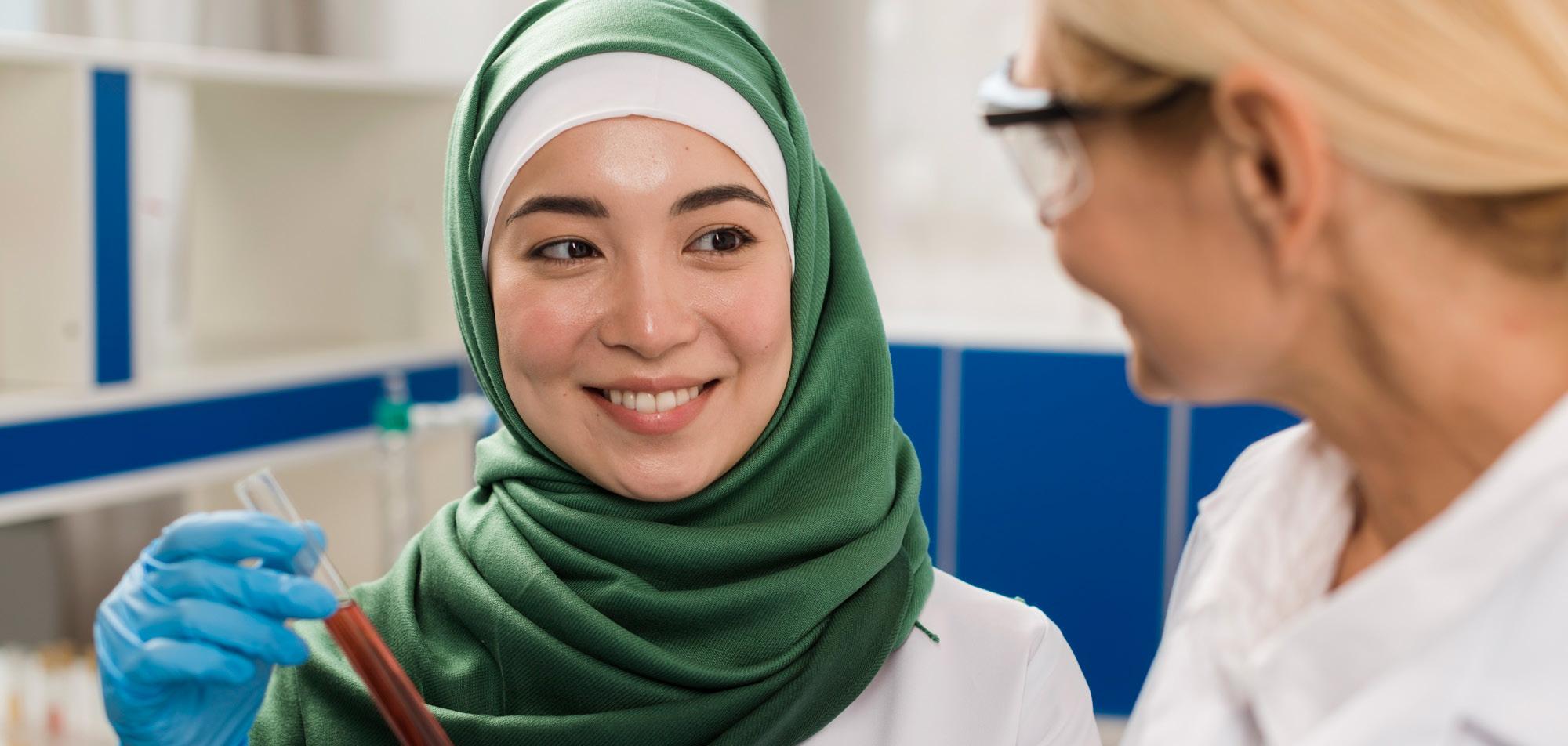
force in the healthcare sector. Additionally, the prevalence of lifestyle-related diseases like diabetes and hypertension was increasing, exerting more pressure on the healthcare infrastructure. The infrastructure required modernization, and the healthcare workforce needed development in key areas. Recognizing these shortcomings, Vision 2030 laid out a roadmap for a comprehensive overhaul.
Vision 2030 for healthcare rests on several key pillars:
Increased Access and Affordability: Vision 2030 aims to ensure universal health coverage for all Saudi citizens and residents. This includes expanding primary care services, promoting preventative care, and increasing private sec-
Vision 2030 aims to transform Saudi Arabia’s healthcare into a world-class system, ensuring high-quality, accessible care for all citizens.


The plan focuses on expanding healthcare infrastructure, investing in advanced technologies, and enhancing medical education.
Vision 2030 aims to revolutionize healthcare in Saudi Arabia by creating a world-class system that ensures comprehensive, high-quality care. The plan focuses on expanding infrastructure, investing in advanced technologies, and promoting preventative care. Enhancing medical education and training is key to developing a skilled workforce for the evolving needs of the population.
Public-private partnerships are crucial for driving innovation and efficiency. By fostering collaboration between government and private enterprises, Vision 2030 seeks to build a sustainable healthcare ecosystem that improves patient outcomes and boosts economic growth. This approach aims to make Saudi Arabia a global leader in healthcare.
tor participation in healthcare delivery. The goal is to create a more efficient and affordable system with shorter wait times and improved accessibility.
Quality of Care and Patient Safety: Enhancing the quality of care and patient safety is a top priority. Initiatives include implementing robust quality assurance programs, establishing international best practices, and adopting rigorous patient safety protocols. The Ministry of Health is actively working towards achieving global accreditation standards for healthcare facilities.
Modernization of Infrastructure and Technology: Vision 2030 emphasizes modernizing healthcare infrastructure across the kingdom. This involves building new hospitals and clinics, upgrading medical equipment, and investing in digital health solutions. A key focus is on telemedicine and e-health initiatives. The Health Sector Transformation Program aims to digitize 70% of patient activities by 2030, facilitating remote consultations, improved data management, and enhanced service delivery.
Developing the Healthcare Workforce: A
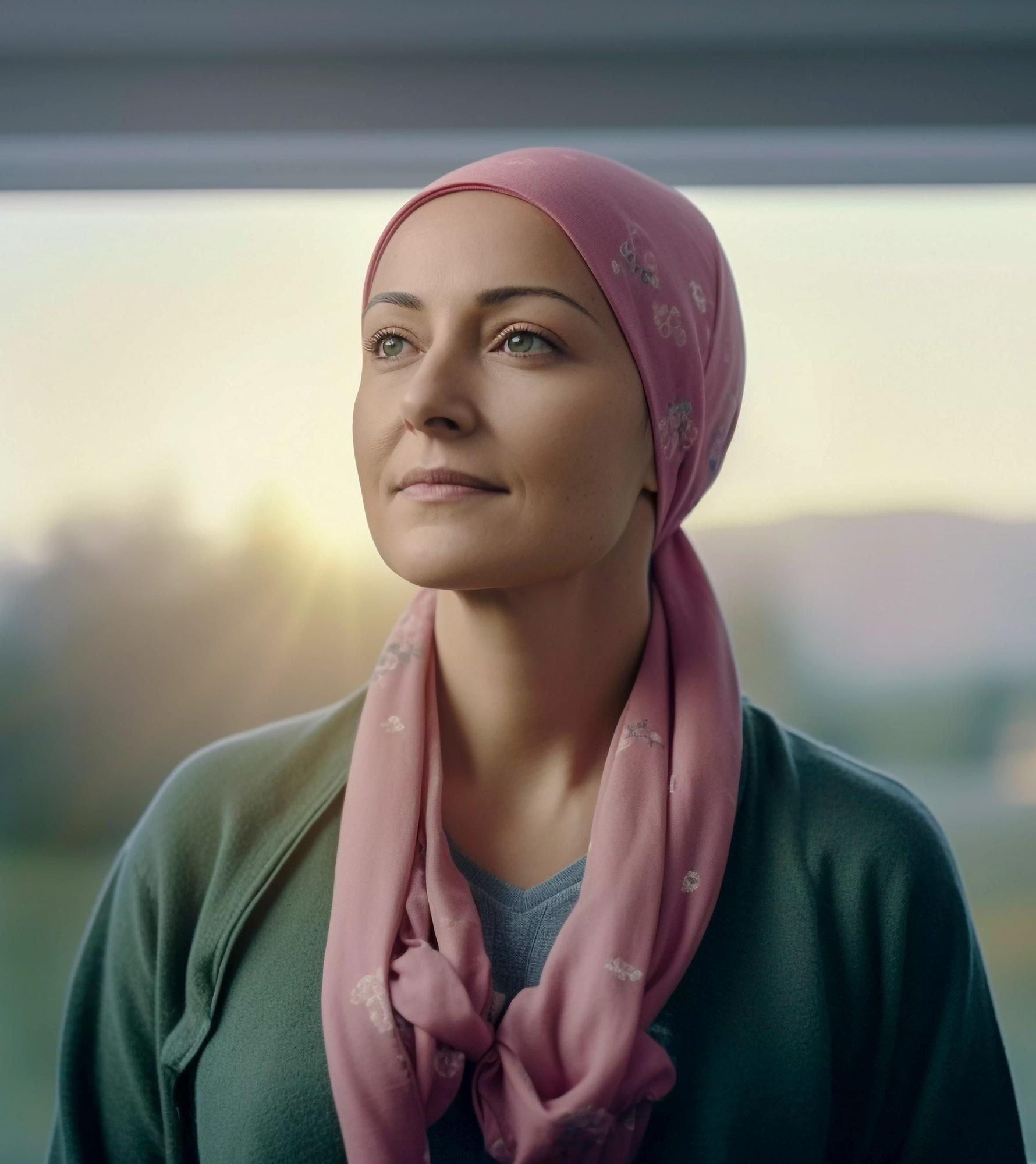
Enhancing care quality and patient safety is paramount, with initiatives focusing on quality assurance, international best practices, and rigorous safety protocols.

Public-private partnerships are key to driving innovation and efficiency in Saudi Arabia’s healthcare sector.


skilled and well-trained healthcare workforce is critical for a robust healthcare system. Vision 2030 promotes investment in healthcare education and training programs. This includes attracting international talent, developing specialized skill sets, and increasing the attractiveness of healthcare professions for Saudi nationals.
Focus on Preventative Care: Shifting the focus from curative to preventative care is a cornerstone of Vision 2030. This entails promoting healthy lifestyles, encouraging early disease detection, and investing in public health initiatives. The aim is to reduce the burden of chronic diseases like diabetes, heart disease, and cancer, ultimately leading to a healthier population.
Vision 2030 seeks to position Saudi Arabia as a global leader in healthcare, setting new standards and boosting economic growth.

Since the launch of Vision 2030, Saudi Arabia has made significant progress in implementing its healthcare initiatives. Some of the key achievements include:
1. Privatization and PPPs: The Kingdom has launched several PPP projects in the healthcare sector, including the development of new hospitals and the privatization of selected public hospitals.
2. Digital Transformation: The Kingdom has launched several digital health initiatives, including the Saudi Electronic Health Record System (SEHR) and the Mawid app, which allows patients to book appointments online.
3. Preventive Care: The Kingdom has launched several initiatives to promote preventive care, including the Saudi Healthy Cities program and the National Transformation Program’s Healthy Living initiative.
4. Medical Education and Research: The Kingdom has established new medical schools and research centres, including the Mohammed Bin Salman College of Medicine and the King Abdullah International Medical Research Centre.
5. Medical Tourism: The Kingdom has launched several initiatives to promote medical tourism, including the development of the King Faisal Specialist Hospital and Research Centre in Riyadh and the King Fahd Medical City in Jeddah.
To address these challenges and transform the healthcare sector, Vision 2030 outlines several key initiatives:
1. Privatization and Public-Private Partnerships (PPPs): The vision aims to increase private sector participation in healthcare delivery through privatization and PPPs. This includes the privatization of selected public hospitals and the establishment of new private hospitals and clinics.
2. Digital Transformation: The vision emphasizes the use of digital technologies to improve healthcare delivery and outcomes. This includes the development of electronic health records, telemedicine services, and mobile health apps.
3. Preventive Care: The vision aims to promote preventive care and healthy lifestyles to reduce the burden of chronic diseases. This includes initiatives to increase physical activity, improve nutrition, and reduce smoking.
4. Medical Education and Research: The vision aims to enhance medical education and research to address the shortage of healthcare professionals and drive innovation in the healthcare sector. This includes the establishment of new medical schools and research centres.
5. Medical Tourism: The vision aims to position Saudi Arabia as a regional hub for medical tourism. This includes the development of specialized medical cities and the promotion of the Kingdom’s healthcare services to international patients.



Vision 2030’s impact on Saudi Arabia’s healthcare sector is already evident:
Improved Access: The expansion of primary care services and increased private sector participation have led to improved access to healthcare services for citizens and residents.
Enhanced Quality: Quality assurance programs and the adoption of international best practices have contributed to a rise in the overall quality of care.
Technological Transformation: The focus on digital healthcare solutions has facilitated the growth of telemedicine consultations, online appointment booking, and electronic medical records. Initiatives like the SEHA Virtual Hospital, connecting over 150 hospitals with telehealth services, are a prime example.
Workforce Development: Increased investment in healthcare education is attracting more talent to the sector and fostering the development of specialized skills.
The Saudi Genome Program (SGP) is a groundbreaking initiative that seeks to revolutionize healthcare in Saudi Arabia and beyond. Launched in 2018 under the patronage of His Royal Highness Prince Mohammed bin Salman bin Abdulaziz, the Crown Prince and Prime Minister, the program aims to harness the power of genomic technologies to reduce the prevalence of genetic diseases and improve the overall quality of life for Saudi citizens.
The SGP is a key component of Saudi Arabia’s Vision 2030, a comprehensive plan to diversify the country’s economy and improve the quality of life for its citizens. The program aligns with Vision 2030’s goal of positioning the Kingdom as a global leader in healthcare by leveraging cutting-edge technologies and fostering innovation.
In 2022, the SGP unveiled its ambitious roadmap for the future, dubbed SGP 2.0. This transformative vision aims to establish the Kingdom as a renowned global frontrunner in genomics, achieved through a series of audacious yet attainable objectives.
One of the primary objectives of SGP 2.0 is to establish the Kingdom as a global hub for world-class collaborations on prevalent genetic diseases. The program seeks to foster partnerships with leading research institutions and biotech companies from around the world to drive advancements in the understanding and treatment of genetic diseases.
Another key objective of SGP 2.0 is to become a leader in genetics and genomics within the MENA region. The program aims to leverage the unique genetic diversity of the Saudi population to gain insights into the genetic basis of diseases that are prevalent in the region. This knowledge can then be used to develop targeted therapies and preventive strategies that are tailored to the specific needs of the region’s population.
The SGP also aims to ensure that genomics plays a vital role in delivering high-quality healthcare to all Saudi citizens. The program seeks to integrate genomics into every aspect of healthcare,
from diagnosis and treatment to prevention and population health management. By doing so, the SGP aims to drive down healthcare costs, improve patient outcomes, and enhance the overall quality of life for Saudi citizens.
To achieve these objectives, the SGP is leveraging state-of-the-art genomic technologies, including next-generation sequencing, bioinformatics, and artificial intelligence. The program is also investing in the development of a world-class genomics research infrastructure, including a national genome centre and a network of regional genome hubs.
The SGP is already making significant progress towards its goals. In its first phase, the program sequenced the genomes of over 10,000 Saudi citizens, providing valuable insights into the genetic diversity of the Saudi population. The program is now in its second phase, which aims to sequence the genomes of an additional 100,000 citizens over the next five years.
The SGP is also driving advancements in healthcare by enhancing diagnosis, therapy, and prevention. For example, the program is using genomics to develop targeted therapies for genetic diseases, such as cystic fibrosis and sickle cell anaemia. The program is also using genomics to improve the accuracy of diagnostic testing, enabling earlier detection and intervention for a range of diseases.
In addition to its direct impact on healthcare, the SGP is also driving economic growth and job creation in the Kingdom. The program is fostering the development of a vibrant biotech industry, creating opportunities for entrepreneurs and researchers to develop new products and services that leverage the power of genomics.
The Saudi Genome Program represents a bold and ambitious vision for the future of healthcare in Saudi Arabia and beyond. By leveraging cutting-edge genomic technologies and fostering collaboration and innovation, the program is poised to drive advancements in healthcare, improve the quality of life for Saudi citizens, and position the Kingdom as a global leader in genomics. With SGP, the future of healthcare is set to be revolutionized in the most extraordinary way.


King Salman Energy Park (SPARK) is a state-ofthe-art industrial hub located in Eastern Saudi Arabia, launched in 2018 by His Royal Highness Prince Mohammed bin Salman bin Abdulaziz, the Crown Prince and Prime Minister. The park is designed to connect global businesses to the Saudi energy sector and beyond, providing a comprehensive range of solutions to support enterprises in the Kingdom.
Upon completion, SPARK will play a significant role in diversifying the Kingdom’s revenue streams and promoting clean energy technologies. The city will feature a dedicated logistics zone and dry port, streamlining the movement of goods in and out of the park.
SPARK is dedicated to sustainable and clean energy production. It is the first and only industrial city globally to receive a silver Leadership in Energy and Environmental Design (LEED) certification, recognizing its commitment to eco-friendly practices.
Discover Qiddiya, Saudi Arabia’s upcoming capital for entertainment, sports, and culture, set to enhance the quality of life for both visitors and residents through the power of play.
Launched in 2018 by King Salman bin Abdulaziz, Qiddiya City is an ambitious project that aims to become a global hub for entertainment, sports, and culture. As the first development from Qiddiya, the organization


behind the ‘power of play’, the city will offer a wide range of attractions, including international sports arenas, concert and entertainment venues, academies for sports and the arts, racetracks, outdoor and adventure activities, and family-friendly theme parks. Among the highlights are a Six Flags theme park and a water theme park, both featuring unique rides and experiences.
Qiddiya City plays a crucial role in Saudi Arabia’s transformation into a thriving economy and an ambitious nation. By focusing on play as its core principle, Qiddiya aims to create destinations, programs, and initiatives that will improve the quality of life for both visitors and residents. With 67% of Saudis under 35, the city will cater to the Kingdom’s youthful population, providing new opportunities for entertainment, employment, and fun.
By developing a world-class tourism destination in the heart of Saudi Arabia, Qiddiya City will create new jobs, contribute to a more prosperous and vibrant society, and offer Saudis the chance to enjoy top-notch entertainment without having to travel abroad.
Experience the enchanting beauty and thrilling adventures that await you at The Red Sea, a luxurious and regenerative tourism destination that’s setting new standards in sustainable travel.
Located along the pristine west coast of Saudi Arabia, this 28,000 square kilometre paradise
boasts an archipelago of over 90 untouched islands, breathtaking beaches, and a myriad of natural wonders, including dormant volcanoes, desert dunes, and mountain canyons. The Red Sea is also home to the world’s fourth-largest barrier reef, teeming with vibrant marine life and coral ecosystems.
The Red Sea is not just a picturesque holiday destination; it’s a cultural treasure trove with historical sites waiting to be discovered. Starting in 2023, this unique destination will welcome its first guests, inviting them to explore its rich cultural heritage and indulge in unparalleled experiences. Upon completion in 2030, The Red Sea will offer 8,000 rooms across 50 hotels and 1,000 residential properties, catering to every taste and preference. From worldclass amenities to the allure of natural simplicity, The Red Sea has something for everyone.
ROSHN
Experience the harmony of modern living and rich cultural heritage with ROSHN, a national community developer committed to creating exceptional neighbourhoods for Saudis to call home. Established in 2020, ROSHN plays a pivotal role in achieving the ambitious goal of 70% homeownership by 2030, contributing significantly to the Kingdom’s real estate and infrastructure sectors.
As a giga-project under the Public Investment Fund, ROSHN leads the way as Saudi Arabia’s premier real estate enabler, dedicated to enhancing the quality of life for all citizens. By collaborating with local partners and generating


employment opportunities, ROSHN actively contributes to the Kingdom’s ongoing growth and prosperity.
ROSHN’s groundbreaking communities artfully blend contemporary living with the unique history and heritage of Saudi cities, resulting in vibrant and lively neighbourhoods. Offering a diverse range of homes to suit all preferences and budgets, ROSHN sets new benchmarks for excellence, delivering unparalleled living experiences that enrich the lives of its residents.
In addition to providing top-notch housing options, ROSHN’s communities feature world-class amenities, green spaces, and seamless connectivity, ensuring that residents enjoy an unmatched living experience. By fostering a sense of belonging and community, ROSHN is not just building homes but creating thriving, interconnected
neighbourhoods that will shape the future of Saudi Arabia.
Despite the progress made, the Kingdom faces several challenges in achieving its Vision 2030 healthcare goals. These include:
1. Shortage of Healthcare Professionals: The Kingdom faces a significant shortage of healthcare professionals, particularly in specialized fields. To address this challenge, the Kingdom needs to invest in medical education and training and attract international healthcare professionals.
2. Regulatory Barriers: The Kingdom’s healthcare sector is heavily regulated, which can hinder innovation and private sector participation. To address this challenge, the Kingdom needs to streamline its regulatory processes and create a more conducive environment for private sector investment.
3. Funding: The Kingdom’s healthcare initiatives require significant funding. To ensure sustainable funding, the Kingdom needs to diversify its revenue sources and explore alternative funding models, such as health insurance and out-of-pocket payments.
4. Cultural Barriers: The Kingdom’s conservative culture can pose challenges to the implementation of certain healthcare initiatives, such as those related to women’s health and mental health. To address this challenge, the Kingdom needs to engage with religious and community leaders and promote awareness and acceptance of these initiatives.
Vision 2030 represents a bold and ambitious plan to transform healthcare in Saudi Arabia. By focusing on privatization, digital transformation, preventive care, medical education and research, and medical tourism, the Kingdom aims to improve access to quality healthcare services, promote healthy lifestyles, and position itself as a regional leader in healthcare.
While significant progress has been made, challenges remain. To achieve its Vision 2030 healthcare goals, the Kingdom needs to address these challenges and continue to invest in its healthcare sector. With strong leadership, a clear vision, and a commitment to innovation and excellence, the Kingdom is well-positioned to revolutionize healthcare and improve the health and well-being of its citizens.


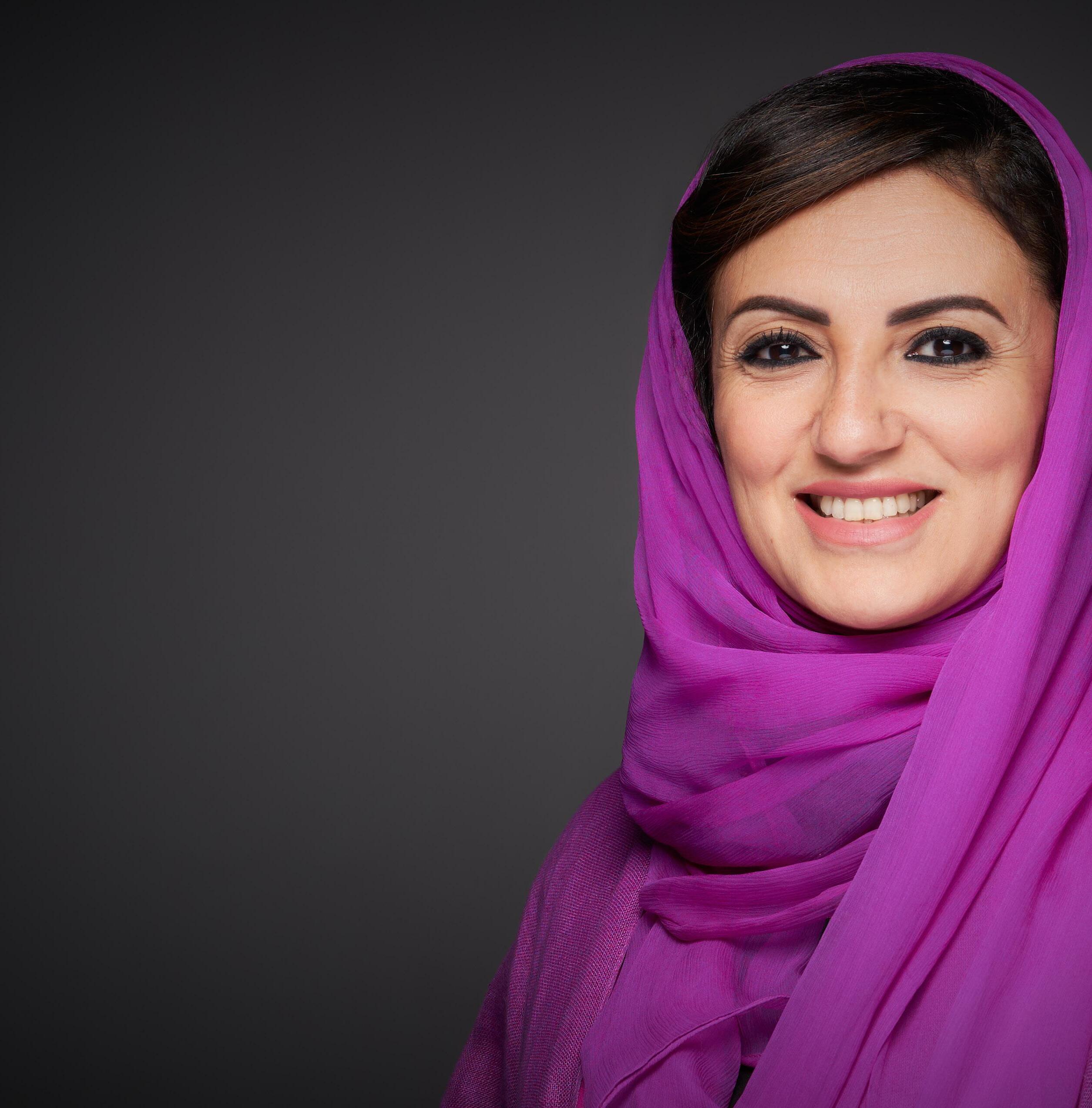

From her early fascination with biochemistry to her groundbreaking contributions to healthcare innovation, Samar Nassar has navigated a remarkable path, setting an inspiring precedent for future leaders. Her journey, beginning as a pioneering female sales representative for Johnson & Johnson MedTech in Saudi Arabia, has now led her to a pivotal role at Accenture’s healthcare practice in the Middle East. Her career is a testament to determination, resilience, and relentless innovation.
Born in Kuwait and raised in Saudi Arabia, Samar’s journey into healthcare began in 2005, marked by a bold challenge to the status quo. “I remember the first day I walked into a surgeon’s office,” she recalls, “the looks of surprise were palpable.
But I knew I was there to change minds and open doors.” At that time, the medical device sales landscape in Saudi Arabia was male-dominated, with job postings explicitly seeking male candidates. Yet, Samar’s application through Bayt.com was a significant leap towards breaking these barriers and redefining the industry.
Samar became the first Saudi woman to work as a sales representative for Johnson & Johnson MedTech. Facing initial skepticism with grace and determination, her role went beyond salesmanship—it was about educating, inspiring, and transforming perceptions in operating rooms and beyond. Samar’s pioneering spirit ignited a revolution in healthcare access and equity, particularly for women. Reflecting on her journey, Samar shares, “My passion for healthcare sparked early on, driven by a deep fascination with biochemistry. However, it was the stark realization of the disparities in healthcare access and equity in my community that truly motivated me. Witnessing firsthand the challenges faced by women and underprivileged groups in accessing adequate healthcare services, I felt a strong calling to be part of the solution.”
Driven by a relentless pursuit of knowledge and a desire to broaden her impact, Samar pursued an MBA in the UK on a scholarship from the British Council and HSBC. This pivotal chapter opened
doors to global opportunities and sharpened her leadership skills.
Returning to General Electric’s esteemed rotational leadership program, Samar’s expertise and unique perspective propelled her across various global healthcare landscapes, solidifying her presence in the industry.
“Driving the future of healthcare through innovation isn’t just a profession; it’s a calling to improve lives,” Samar emphasizes. “As we step into the unknown, armed with AI, we’re not just changing medical practices; we’re crafting a healthier, more equitable world for generations to come.”
The historic 2017 announcement allowing Saudi women to drive, a cornerstone of Vision 2030, resonated deeply with Samar, heralding a new era of opportunities and societal progress. Eager to be part of the transformative waves sweeping through her homeland, Samar focused on healthcare access and equity, particularly for women. Her work, from research at Imperial College London to contributions at the World Economic Forum and her influential role at the Ministry of Investment of Saudi Arabia (MISA), has been pivotal in fostering innovation and driving strategic investments into healthcare.
As we witness unprecedented growth in the healthcare industry across the Middle East, particularly in Saudi Arabia, the integration of advanced digital solutions and AI-driven strategies is revolutionizing the way healthcare is delivered and managed. By building a solid digital core, which serves as the basic infrastructure for transformation, healthcare providers can streamline operations and empower a more skilled and adaptable workforce ready to meet the challenges of modern healthcare.
At MISA, Samar played a crucial role in steering healthcare investments and was a board member for the Vision 2030 Health Sector Transformation Program. Her strategic acumen and industry knowledge were further honed during her tenure as Director of Healthcare at KPMG Saudi Arabia. Notably, Samar launched Artery’s operations in the Middle East, pioneering AI-based diagnostic imaging in the region.
Samar is a strong advocate for integrating artificial intelligence and design into healthcare solutions. She envisions a transformative impact of these technologies on healthcare in the Middle East: “The integration of design into healthcare is not just about technological advancement; it’s about fundamentally rethinking our approach to health and wellness. AI offers unprecedented precision and efficiency, from diagnostics to treatment plans and patient monitoring. Meanwhile, applying design in a healthcare context helps us empathize with and innovate according to the actual needs of patients and limitations of providers.”
During her tenure at the Ministry of Investment, Samar faced the challenge of transforming the existing healthcare framework into a more integrated, efficient, and patient-centric system. This required significant financial investment, legal changes, and a cultural shift towards preventive and community-based treatment. Among her achievements, she is particularly proud of increasing the private sector’s involvement in healthcare, enhancing healthcare accessibility, and fostering innovations like the localization of medical technologies.


As a woman who has achieved significant success in a traditionally male-dominated sector, Samar shares her approach to leadership: “Leadership, to me, is fundamentally about humility and resilience. It’s about seeing the bigger picture and staying the course despite the obstacles. In the face of professional challenges, especially those stemming from gender biases, I’ve found that competence speaks louder than any prejudice.
I focus on building strong, results-oriented teams and aim to be a role model, proving through action that women are by default equally capable and deserving of leadership roles.”
Today, Samar Nassar leads Accenture’s healthcare initiatives across the Middle East, focusing on leveraging generative AI to harness human ingenuity. Her story is not just about professional milestones; it reflects her profound influence on healthcare innovation, her unwavering commitment to advancing women’s roles in the field, and her enduring impact on the healthcare landscape in Saudi Arabia and beyond.
When discussing current trends and growth potential in Saudi Arabia’s healthcare industry, Samar highlights areas of high priority such as mental health-specific rehabilitation centers and the localization of medical device manufacturing. She emphasizes the importance of emerging technologies in digital health and the role of the Ministry of Investment in navigating the healthcare sector’s transition phase.
Transitioning from traditional healthcare to a focus on longevity marks a significant global shift. By prioritizing preventive care, personalized medicine, and advanced technologies, we aim to enhance the quality of life and extend healthy lifespans—the duration of time an individual lives in good health. This approach not only improves patient outcomes but also fosters a sustainable healthcare system for future generations.


From her early fascination with biochemistry to her groundbreaking contributions to healthcare innovation, Samar Nassar has navigated a remarkable path, setting an inspiring precedent for future leaders. Beginning as a pioneering female sales representative for Johnson & Johnson MedTech in Saudi Arabia, she broke barriers in a male-dominated field and established herself as a formidable force in healthcare. Her relentless pursuit of excellence and passion for innovation led her to Accenture’s healthcare practice in the Middle East, where she continues to drive transformative changes in the industry. Samar’s journey, marked by determination and resilience, exemplifies the power of perseverance and visionary leadership in achieving remarkable success.
Samar offers advice to young professionals, especially women, aspiring to make a difference in the healthcare industry: “Cultivate a passion for lifelong learning and an unwavering commitment to your goals. The healthcare industry is complex and ever-evolving, so staying informed and adaptable is crucial. Women, in particular, should not shy away from challenging the status quo. Be bold, assert your ideas, and build networks of support that propel you forward. Remember, every challenge is an opportunity to demonstrate your strength and capability.”
As Samar continues to lead strategic investments in healthcare and drive health-tech innovation, her vision for the future is clear: to leverage AI to harness human ingenuity and reimagine healthcare in one of the world’s most dynamic regions. Her journey serves as a powerful reminder of what is possible when vision meets courage, and change becomes the enduring spirit of one’s endeavors.

Introducing Dr. Sulaiman Al Habib and his pioneering contributions to the healthcare industry
Dr. Sulaiman Al Habib stands as a visionary leader in the healthcare industry, known for his pioneering contributions and transformative impact. As the Founder and Chairman of Dr. Sulaiman Al Habib Medical Services Group (HMG), he has revolutionised healthcare delivery in Saudi Arabia and beyond. With a background as a qualified paediatrician and former head of the paediatrics department, Dr. Al Habib’s vision and dedication have led to the establishment of a network of hospitals and medical centres across Saudi Arabia, UAE and Bahrain. Dr. Sulaiman Al Habib Group is one of the leading hospitals in the Middle East, with over 30 years of experience, a highly skilled team, and the latest medical technologies
Founding of HMG and its evolution into a leading healthcare provider:
The genesis of Dr. Sulaiman Al Habib Medical Services Group (HMG) marks a transformative journey in the healthcare industry. Founded in 1995 by Dr. Sulaiman Al Habib, the company has steadily risen to prominence in the healthcare industry, with a strong focus on hospitals, pharmacies, and other healthcare facilities. Today the group owns 14 hospitals and has seven medical centres across Saudi Arabia, the UAE, and Bahrain. HMG has emerged as a leading healthcare provider, offering a comprehensive range of medical services. HMG made $2.2 billion in revenues for 2022 and recorded $3.4 billion in assets.
In the realm of healthcare, every challenge is an opportunity to redefine possibilities, every setback a chance to innovate, and every success a testament to our unwavering commitment to transforming lives.


Early challenges and milestones in establishing HMG:
Despite facing early challenges, Dr. Al Habib’s vision and perseverance propelled HMG’s evolution into a prominent player in Saudi Arabia and beyond. With a focus on excellence and innovation, HMG has achieved significant milestones in establishing state-of-the-art medical facilities and delivering exceptional patient
care, setting new standards in the healthcare landscape.
Ethical Excellence and Governance Integrity at HMG:
At the core of HMG’s operations lies its commitment to providing top-notch medical care to patients through its Hospital segment. This segment encompasses the establishment, man-
agement, and operation of hospitals, medical facilities, pharmacies, and diagnostic laboratories. HMG’s hospitals are equipped with stateof-the-art technology and staffed with highly skilled healthcare professionals, ensuring that patients receive the highest quality of care.
The Pharmacies segment of HMG includes Al Habib Pharmacies, Middle East Pharmacies Company, and Afia Pharmacies Company.
True progress in healthcare isn’t measured solely by technological advancements, but by the depth of compassion and the breadth of impact we bring to each patient’s journey. Together, let’s pioneer a future where health knows no limits.
These pharmacies offer a wide range of pharmaceutical products and services to cater to the diverse needs of patients. Whether it’s prescription medications, over-the-counter drugs, or medical supplies, HMG pharmacies strive to provide patients with access to essential healthcare products.
With a focus on innovation and patient-centric care, HMG is committed to providing stateof-the-art medical facilities and innovative healthcare services. The company’s mission is to create value for people by developing and operating cutting-edge medical facilities and offering innovative healthcare solutions.
HMG’s vision is to be the most trusted healthcare provider globally, known for its medical excellence and superior patient experience. The company’s commitment to compliance and ethics is reflected in its Compliance Program, which emphasises good governance and integrity in all aspects of its operations. HMG’s compliance division plays a crucial role in identifying and mitigating risks of non-compliance
with laws, regulations, and standards, ensuring the protection of the company’s reputation and credibility.
In terms of corporate governance, HMG adheres to high standards set by the Capital Market Authority, ensuring transparency, accountability, and expertise in its operations. Dr. Sulaiman Bin Abdulaziz Al Habib, the Founder and Chairman of HMG, is a highly respected figure in the healthcare industry, with a Bachelor’s degree in Medicine and Surgery from King Saud University and a Fellowship in Pediatrics from the British Royal College of Physicians.
Dr. Sulaiman Al Habib Medical Services Group (HMG) has received over 30 awards and garnered 300+ accreditations, highlighting its commitment to excellence in healthcare. Awards include the Centre of Excellence in minimally invasive surgery, accreditation by the Joint Commission International, and the Middle East HR Excellence Award. HMG’s impact on the health-
care industry and society is profound, with its pioneering contributions in minimally invasive surgery, radiology, and human resources development. Dr. Sulaiman Al Habib’s leadership has been recognized globally, cementing HMG’s reputation as a leader in medical excellence and innovation.
Outlook: HMG’s vision for the future of healthcare:
Looking ahead, Dr. Sulaiman Al Habib Medical Services Group (HMG) envisions a future of healthcare marked by continued innovation and excellence. HMG is committed to expanding its presence globally, with plans for further expansion into new markets and regions. Additionally, the company aims to enhance its services through continuous innovation, leveraging cutting-edge technology to improve patient care and outcomes. HMG’s vision includes a focus on providing comprehensive healthcare solutions that address the evolving needs of patients, while maintaining its reputation for excellence in medical care and service delivery.


Nasser Sultan Al-Subaie, the CEO and Vice Chairman of Mouwasat Medical Services Company, Saudi Arabia, spearheads the company’s diverse operations, including hospitals, medical centres, pharmacies, and wholesale medical equipment and drugs. With a notable 17.5% ownership stake valued at $898 million, Al-Subaie leads the company’s strategic initiatives and expansion efforts. Mouwasat Medical Services, founded in 1975 by Mohammed Sultan Subaie, has grown into a healthcare powerhouse, reporting total assets of $1.2 billion and revenues of $446.4 million in 2022. Under Al-Subaie’s leadership, the company has embraced innovation, partnering with MediServ to introduce AI-based integrated OCT machines and Philips to implement TeleICU solutions across its critical care network in Saudi Arabia.
Mr. Nasser Sultan Al Subaie put lights on the patient-centric approach adopted by the Mouwasat Group and their remarkable journey of growth and dedication to delivering top-notch healthcare services throughout Saudi Arabia.
The Mouwasat Group first follows the philosophy of the patient. The group places their well-being at the forefront of its priorities. From the initial steps of receiving visitors to the final stages of recovery, the group strives to provide a seamless experience for every patient. Attention to detail is paramount, from the layout of waiting rooms and the ambiance to the quality of patient rooms and amenities. The group is dedicated to ensuring excellence across all aspects of patient care, including the recruitment of skilled professionals and the latest medical equipment in operating theatres.
Since its establishment in 1974, Mouwasat has embarked on an impressive journey of strategic expansion, starting with the inaugural hospital in Dammam and growing into a network of seven hospitals across Saudi Arabia. Through their steadfast dedication to providing accessible, high-quality healthcare nationwide, they have positioned themselves as a leader in the healthcare sector, committed to addressing the ever-changing healthcare needs of Saudi Arabia’s population.
Expanding upon their existing infrastructure of over 1200 beds and 580 clinics spread across their seven operational hospitals, they are investing in growth with three ongoing projects. These projects aim to significantly enhance their capacity to serve a diverse patient base while aligning with their vision of advancing patient care through cutting-edge facilities and a skilled team of healthcare professionals.
Driven by their commitment to ensuring universal access to high-quality healthcare, they integrate cutting-edge technology and proven medical techniques, leveraging best practices in collaboration with both local and international medical organisations. Their goal is to establish outstanding healthcare facilities within and beyond the Kingdom, delivering excellence in patient care.
Their mission is to deliver sustainable, top-tier medical services of the utmost quality to their clients. They are dedicated to continuously enhancing their medical services and nurturing the skills and expertise of their staff. Innovation and teamwork are at the core of their approach as they strive to meet the evolving needs of the future.
At their hospital, they uphold a set of values and ethical principles that guide their actions
and shape their organisational culture.
Excellence: They are committed to delivering quality care and developing their resources.
Integrity: They value honesty, honour, and the confidentiality of their patients.
Trust: They foster trust and respect for every individual.
Collaboration: They work as a team to achieve common goals.
Responsibility: They demonstrate loyalty, commitment, and financial responsibility.
Safety: They prioritise patient and environmental safety in all their endeavours.
With a vision to deliver exceptional services to its clients and an overarching strategy to extend coverage across all regions of the kingdom, the group has initiated various developments. These include the introduction of new medical services, such as the Heart Care Center, at its centers. Additionally, the group has established facilities for fertility treatments, including in vitro fertilization and infertility treatment, as well as a center for genetic diseases treatment at Mouwasat Hospital in Dammam.
In healthcare, our greatest currency is compassion; it’s the force that drives us to innovate, to heal, and to never settle for anything less than excellence.
The group has ambitious plans to expand its current facilities and establish new ones as part of its strategic initiative to encompass all regions of the kingdom and address the growing demand for healthcare services. The group is committed to providing its services to all citizens and residents of the Kingdom of Saudi Arabia. Management is currently exploring opportunities to establish healthcare facilities in the western region of the Kingdom, aiming to improve accessibility to our services for both existing and potential clients.
Furthermore, the group undertakes periodic maintenance and upgrades in line with the latest advancements in healthcare to ensure the delivery of high-quality services to its clients.
In conclusion, Nasser Sultan Al-Subaie’s leadership has played a pivotal role in shaping Mouwasat Medical Services Company into a leading healthcare provider in Saudi Arabia. With a focus on patient-centric care, innovation, and continuous improvement, Mouwasat Group remains dedicated to enhancing the healthcare experience and improving the well-being of its patients.
For nearly a century, Tamer Group has been a trailblazer in Saudi Arabia’s healthcare sector, with Ayman Tamer at its helm, embodying a legacy of excellence and forward-thinking leadership. Ayman serves as Chairman of Tamer Group and holds positions on several esteemed boards, including Saudi Arabian Japanese Pharmaceutical Manufacturing Co. (SAJA) and Effat University, among others. His commitment to the industry is reflected in his membership in organisations like the World Economic Forum and the Health Industry, and his role in the Pharma Committee at the Jeddah Chamber of Commerce and Industry.
Founded in 1922 by Ayman’s grandfather, Tamer Group started as a humble pharmacy in Jeddah, dedicated to bringing modern medicine to the Arabian peninsula. As the company approaches its 100-year anniversary and continues to thrive under its new corporate structure, values of inclusivity, diversity, and entrepreneurship remain paramount. From its roots in pharmaceuticals, Tamer Group has expanded into consumer healthcare and medical distribution. In 1993, the company ventured into pharmaceutical manufacturing through a joint venture with Daiichi Sankyo and Astellas. Today, Tamer Group not only produces its own generics but also pioneers cutting-edge treatments for the region, solidifying its position as a leader in Saudi Arabia’s healthcare landscape.
Tamer Group’s Mission and Dedication:
The World Economic Forum serves as a global platform, fostering connections between stakeholders for collaborative progress. Established in 1971, it upholds high standards of governance and moral integrity, emphasizing human ingenuity, innovation, and cooperation.
Their commitment to addressing global challenges is channeled through 10 Centers, driving holistic efforts and fostering purposeful communities. These initiatives translate ambition into focused action, guided by diverse viewpoints and multi-year strategies.
Leadership and Governance:
The Forum upholds world-class corporate governance, emphasizing values like legitimacy,
accountability, transparency, and concerted action. Professor Klaus Schwab, as Founder and Executive Chairman, leads the organization, supported by a Board of Trustees who safeguard its mission and values.
President Børge Brende heads the Managing Board, responsible for executing the Forum’s goals. The Managing Board ensures alignment with the Forum’s mission and represents it externally. They report directly to the Board of Trustees, who provide oversight and guidance to the organization.
Guiding Principles:
Embedded in the DNA of Tamer Group are principles of inclusiveness, diversity, equality, respect, and entrepreneurship. These foundational values have underpinned the company’s mission to serve the community and foster a better future for generations.
Evolution and Expansion:
From its origins as a pharmacy, Tamer Group expanded into consumer healthcare in the late 1950s, introducing nutritional and functional food products. Subsequently, the company ventured into the distribution of pharmaceuticals for major global players, marking a significant milestone in its growth trajectory.
As the pharmaceutical industry in Saudi Arabia undergoes a profound transformation in response to Vision 2030, Ayman Tamer sheds light on the evolving landscape and the pivotal role of Tamer Group in shaping the future of healthcare provision in the kingdom.
Adapting to Changing Needs:
According to Ayman Tamer, the pharmaceutical industry is experiencing a paradigm shift driven by government initiatives and regulatory reforms. The Saudi Food and Drug Authority (SFDA) is streamlining the registration process, significantly reducing the time required for approval. With a focus on stringent quality standards, the SFDA aims to ensure that high-quality products reach patients in Saudi Arabia.
Multinational corporations and local manufacturers are ramping up their presence in the kingdom, catering to the growing demand for pharmaceuticals.
Technology is revolutionizing healthcare globally, and Saudi Arabia is no exception. Ayman Tamer emphasizes the government’s commitment to digitalization, evidenced by initiatives such as the Saudi eHealth Analytics Platform and electronic prescription services. Telemedicine and telehealth are gaining traction, offering convenient access to healthcare services. Looking ahead, advancements in AI, personalized medicine, and wearable devices are poised to transform healthcare delivery.
Artificial intelligence (AI) holds immense potential in bridging healthcare gaps and enhancing patient care. Ayman Tamer underscores the importance of leveraging AI to analyze vast amounts of healthcare data and develop algorithms for improved diagnosis and treatment. AI has the capacity to complement human capabilities, revolutionizing medical practices and improving patient outcomes.
Public-private partnerships (PPPs) are integral to the future of healthcare in Saudi Arabia. Ayman Tamer believes that PPPs will facilitate investment in healthcare infrastructure and services, fostering innovation and collaboration between the public and private sectors. By allowing private companies to participate in government initiatives, PPPs will drive the construction of new hospitals, primary care centers, and laboratories, ultimately benefiting patients across the kingdom.
In conclusion, Ayman Tamer’s visionary leadership and insights underscore Tamer Group’s commitment to driving innovation and excellence in healthcare, aligning with Saudi Arabia’s ambitious vision for the future. With a focus on leveraging technology and forging strategic partnerships, Tamer Group is poised to play a pivotal role in shaping the healthcare landscape of tomorrow.

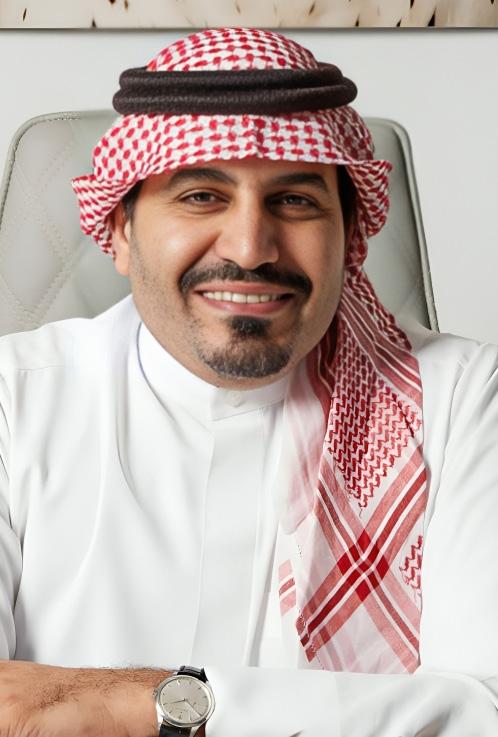
Makarem Sobhi Batterjee stands as a prominent figure in the Saudi business landscape, distinguished as a leader, investor, and entrepreneur. His multifaceted roles include serving as the President of Saudi German Hospitals (SGH) Group, a colossal private hospital network in the MENA region. Additionally, he holds the position of Vice President at Middle East Healthcare Company Limited (MEAHCO), further solidifying his influence in the healthcare sector.
At the helm of Saudi German Hospitals Group, Batterjee steers the organisation with a vision for excellence in healthcare delivery. His leadership extends to Bait Al Batterjee Holding Company, a family-owned conglomerate boasting investments in 25 subsidiaries and employing over 12,500 individuals. Furthermore, Batterjee’s entrepreneurial spirit is evident through his founding role in the New City Company, demonstrating his commitment to fostering diverse business ventures.
As the founder and CEO of Shababco Enterprises, Batterjee has been instrumental in establishing Gold’s Gym, the largest award-winning gym chain in Saudi Arabia. His innovative ventures also include Humania Capital, a healthcare investment firm, and JanPro, a commercial cleaning brand. Moreover, Batterjee’s influence stretches beyond business, as he played a pivotal role in establishing the Saudi Chapter of the Entrepreneurs’ Organization, further contributing to the entrepreneurial ecosystem.
Recognized for his dedication to health and wellness, Batterjee has championed initiatives for women’s empowerment. His efforts were acknowledged by the United Nations, which bestowed upon him an honorary doctorate for inaugurating the first women-only fitness center in Saudi Arabia. Batterjee’s commitment to excellence has earned him accolades, including being named a Young Global Leader by the World Economic Forum and the Middle East Young Entrepreneur of the Year by the Dubai Chamber of Commerce and Industry.
Batterjee’s contributions have not gone unnoticed, as evidenced by his receipt of the Randi
Carrol Award for establishing the Saudi chapter of the Entrepreneurs’ Organization and being recognized as a Young Arab Leader by Sheikh Mohammed bin Rashid Al Maktoum. His achievements were further highlighted when Gold’s Gym honored him with the Gold’s Gym Vision Award in 2018 during its convention in Las Vegas.
In addition to his entrepreneurial pursuits, Batterjee has made significant strides in global economic circles, serving as a member of the Bretton Woods Committee, where he became the youngest member and one of the few Arab representatives. His current role as President of Saudi German Health underscores his extensive experience in healthcare, with the organisation boasting 18 facilities across Saudi Arabia, the U.A.E., Egypt, Yemen, Morocco, and Pakistan.
In 2022, Saudi German Health expanded its footprint with the inauguration of a hospital in the Al Jamea District, Jeddah. The company’s financial prowess is evident, with revenues reaching $409 million in the first nine months of 2022 and assets totaling $1.2 billion. Batterjee’s expertise is further demonstrated through his executive roles at Bait Al Batterjee Group and Humania Capital, solidifying his status as a visionary leader in the realm of business and healthcare.
Caring Like Family: Saudi German Health’s Commitment to Patient-Centric Care
In the fast-paced world of healthcare, Saudi German Health stands out for its unwavering commitment to providing compassionate, patient-centric care across its global network of hospitals, clinics, pharmacies, and educational facilities. At the core of Saudi German Health’s ethos is the belief that every patient, partner, staff member, and community member de-

serves to be treated like family.
Embracing a Purpose-Driven Approach:
Saudi German Health’s purpose is simple yet profound: to positively impact people’s health and relieve their suffering. This guiding principle underscores the organisation’s dedication to improving the well-being of individuals and communities, driving every decision and action within the group.
With a vision to become the most accessible and agile healthcare group in the region, Saudi German Health strives to break down barriers to healthcare access and deliver innovative, comprehensive care to all patients, anytime, anywhere. By embracing technological advancements and fostering a patient-centric approach, the organisation aims to revolutionise the healthcare experience for everyone it serves.
Core Values that Define them:
Saudi German Health’s core values form the
cornerstone of its corporate culture, shaping the way the organisation operates and interacts with stakeholders. These values include compassion, Excellence, Integrity, Innovation, Collaboration, Resilience.
Delivering Care Like Family:
At Saudi German Health, the concept of “Caring like family” is more than just a slogan – it’s a way of life. From arrival to recovery, every interaction exudes warmth, compassion, and genuine care. Whether it’s a smile from a nurse, a word from a physician, or a gesture from their staff, each reflects their commitment to treating patients as family.
Empowering Patients and Communities:
Beyond providing exceptional medical care, Saudi German Health is dedicated to empowering patients and communities to take control of their health and well-being. Through educational initiatives, community outreach programs, and partnerships with local organisations, the organisation seeks to equip individuals with the knowledge and resources they need to lead healthier lives.
In healthcare, every action is a chance to make a difference. Let’s strive to inspire healing, ignite hope, and empower lives with compassion as our guiding light.



The Middle East is witnessing a significant transformation in its healthcare landscape, driven by factors such as a growing population, an increasing prevalence of chronic diseases, and a surge in healthcare spending. It is also fuelled by increasing investments, evolving regulatory landscapes, and significant opportunities for growth. This evolution presents a myriad of opportunities for investors, healthcare providers, and technology companies looking to capitalize on the region’s burgeoning healthcare market. The UAE healthcare sector has demonstrated robust growth, aligning with the nation’s broader ambitions to serve as a regional hub for medical tourism. This growth trajectory has been significantly influenced by the COVID-19 pandemic, prompting increased investment in healthcare resources and infrastructure. This article provides an in-depth analysis of the healthcare market development in the Middle East, focusing on investment trends, regulatory frameworks, and growth opportunities.
Healthcare expenditure in the Middle East has been on an upward trajectory, with the market expected to reach $194.5 billion by 2027, growing at a CAGR of 6.7% from 2020 to 2027 (Meticulous Research, 2020). This growth is attributed to various factors, including an expanding population, a rising incidence of non-communicable diseases, and increased government spending on healthcare infrastructure and services.
The GCC region has seen significant healthcare infrastructure investments between 2010 and 2020, creating a foundation for using health tech to deliver optimized care. The health-tech startup ecosystem in the wider Middle East and North Africa (MENA) region is valued at over USD 1.5 billion, a 22-fold increase since 2016. MENA health-tech startups have received more than USD 200 million in VC funding since 2016, and domestic and foreign VCs have raised USD 900 million for MENA-specific health-tech-dedicated VC funds since 2020.
The pandemic accelerated the use of technology to deliver healthcare, easing patient comfort with remote consultancy. Regulatory pathways were put in place to deliver services such as remote monitoring, telehealth, and electronic health records. Healthcare institutions have adopted cloud computing, automation, and artificial intelligence to streamline patient care, while reg-tech has ensured that regulatory systems are digitized.
With digital transformation, regulators and healthcare professionals are more likely to use AI, cognitive assistance, robotics, and blockchain to ensure better outcomes, real-time response, and a higher degree of wellness. This trend is augmented by the implementation of smart city initiatives, which make possible the integration of various touchpoints to improve residents’ quality of life. Dubai’s Smart City vision is to be “the happiest city on earth,” and one of the six targets of the Smart Dubai 2021 strategy is an interconnected society with easily accessible social services.
The latest research estimates that the combined digital health market in Saudi Arabia and the UAE could reach USD 4 billion by 2026, with the biggest share commanded by online pharmacies.
The healthcare industry is shifting towards a more holistic and preventive approach, focusing on treating the whole person rather than just the symptoms. This approach aligns with the World Health Organization’s definition of public health and emphasizes the importance of understanding how social determinants affect a person’s health. Preventive medical technology is becoming increasingly important, allowing for early detection and prevention of diseases. Traditional and complementary medicine also play a crucial role in this approach, with the market for anti-aging and longevity in the GCC expected to grow at a CAGR of 24% until 2027.
In the UAE, there is an early adopter approach to complementary and alternative medicine, with close to 50% of people having tried these treatments. DHCC has been at the forefront of the integrated medicine approach, offering a range of treatments such as homeopathy, ayurveda, and traditional Chinese medicine for over a decade. The wellness market has expanded beyond traditional spas and medicine to include holistic health treatments, elderly care, rehabilitation, and mental health, mostly delivered digitally. The global market for wellness tourism is estimated to reach USD 1.2 trillion by 2027, while the global spa market is estimated to grow at a CAGR of 12.1% from 2021 to reach USD 117.9 billion by 2028.

“Regulatory agility in the UAE’s
is fostering innovation, enhancing the quality of care, and setting new benchmarks for global healthcare standards
The COVID-19 pandemic brought about a need for regulatory agility and innovation, as countries matched global best practices to respond to the health emergency. In the UAE, the Ministry of Health and Prevention (MOHAP) and the Dubai Health Authority (DHA) introduced new regulations and policies to meet the challenges of the pandemic.
MOHAP issued executive regulations to the federal law on information and communication technology in healthcare, detailing the exemptions to the restriction on the transfer of health data outside of the UAE. The DHA issued policy documents addressing various topics, including the ‘Telehealth policy, standards, clinical guidelines, and reporting indicators (2021)’, which set out the regulatory requirements for licensing of telehealth services.
Other innovations that came under regulatory purview include standards for Hyperbaric Oxygen Therapy (HBOT) services, onboarding hospitals to the Health Information Exchange Platform (NABIDH), policy on Artificial Intelligence in Healthcare, and Healthcare Data Quality Policy.
The UAE will chair the Agile Nations network, comprising seven countries, to foster cooperation on innovative regulatory practices between governments. Additionally, legislation now allows 100% foreign ownership of UAE-based companies and facilitates 10-year visas for investors and professionals in the medical, scientific, research, and technical fields, which bodes well for investors in the healthcare sector.

The collaboration between the public and private sectors in healthcare delivery has evolved to include organizations beyond the traditional healthcare ecosystem. These partnerships and alliances across sectors aim to leverage expertise, data, experience, investment, and scale to improve operational efficiencies, access to care, data security, cyber controls, and clinical innovation, ultimately enhancing community health outcomes.
With the growing prominence of social and behavioural health determinants, multidisciplinary teams are delivering integrated and personalized healthcare plans to reduce the risk of lifestyle diseases such as heart disease and diabetes. The International Diabetes Foundation reports that the number of adults living with diabetes in the MENA region grew to 73
million in 2021 and is estimated to increase to 136 million by 2045.
In Dubai and the UAE, private sector participation in healthcare is expected to continue growing, with a clear roadmap that enables meeting the business objectives of investors. The Dubai Healthcare City Authority provides clarity on the locations most in need of medical services, the types of health services required, and information on legislation, procedures, and available investment incentives to cater to the growing demand.
Private healthcare expenditure share in the GCC has increased from 28.8% in 2015 to 50.6% in 2020 and is forecasted to reach 53.9% by 2023. The shift towards public-private partnerships presents significant opportunities for investors and entrepreneurs in the healthcare industry.
The COVID-19 pandemic has disrupted healthcare systems globally, with long-term effects still emerging. The healthcare system has fundamentally changed, with vaccines, infrastructure, and policy pivoting to address both immediate and future needs.
Mental health has emerged as a priority, with digital health tools becoming increasingly important. In the UAE, an international study found that over half of residents surveyed reported an adverse impact on their mental health due to the pandemic.
Other direct and indirect impacts of the pandemic include heart, lung, kidney, and diabetes-related problems. Multidisciplinary clinics have been set up to offer a combination of therapies, including breathing exercises, physical therapy, medication, and other treatments.
The private sector is being encouraged to participate in efforts towards health equity, with businesses able to act with agility, innovate quickly, and use newer ways to approach the problem. The Coalition for Epidemic Preparedness Innovations (CEPI) is working towards accelerating the development of vaccines and facilitating equitable distribution during outbreaks.
Local capacity building is also increasingly being focused on, with the UAE’s Ministry of Industry and Advanced Technology (MoIAT) hosting the ‘Make it in the Emirates’ forum in June 2022. Pure Health signed an agreement with MoIAT to invest AED 10 billion (USD 2.72 billion) over the next 10 years to stimulate local industrial capacity, capitalize on opportunities within the healthcare sector, and conduct training programs to upskill the national workforce. This is part of the National Strategy for Industry and Advanced Technology and the In-Country Value (ICV) Programme, which aims to attract investors and manufacturers to the UAE’s pharmaceutical and medical equipment sectors, among others.
The United Arab Emirates has witnessed a significant transformation in its healthcare sector since its inception in 1971. In 1975, there were only 16 hospitals, with just one being privately owned. However, by 2022, Dubai alone saw a surge in private medical facilities, reaching a total of 4,482, including 56 hospitals and 55,208 licensed medical professionals.

The Dubai Health Authority anticipates a growth of 10-15% for medical professionals and 3-6% for facilities in 2023 and beyond.
Dubai Healthcare City (DHCC), established in 2002, has been a significant contributor to this growth. It has become a catalyst for the expansion of the healthcare and wellness sectors, employing 4,425 healthcare professionals in its 10 hospitals and 168 clinical facilities by the end of 2022. DHCC has also attracted 95 global healthcare companies to set up their regional headquarters.
Several factors, including an enhanced reputation and demographic shifts, continue to drive investments in the healthcare and wellness sectors in the UAE and the broader Middle East. The increasing life expectancy has led to a rise in the number of people over 60 years of age, as well as those under 18, necessitating forward-thinking policymaking and regulation. The UAE has emerged as a leader in this regard, positioning
Dubai as a successful destination for healthcare investment and business growth.
The prevalence of various medical conditions, from lifestyle diseases to serious ailments, has guided investment decisions for governments and the private sector. The COVID-19 pandemic has further underscored the need for prevention, wellness, and mental health facilities, prompting a swift response from both sectors.
Five major forces are set to shape the future of healthcare and wellness delivery: holistic and preventative wellness, resilience and agility building, deployment of emerging technologies, increased public-private partnerships, and addressing the long-term impacts of COVID-19.
DHCC, as Dubai’s healthcare and wellness-free zone ecosystem, contributed AED 2.8 billion to Dubai’s GDP in 2021 and supported 15,760 jobs. Over the past two decades, DHCC has reshaped Dubai’s healthcare landscape by creating a thriving ecosystem that offers direct access to a vast network of partners and ease of doing business. As DHCC embarks on its second phase of expansion, its success story continues to unfold.
This growth is a testament to Dubai’s vision of developing industry clusters where companies, corporations, entrepreneurs, and people can thrive. The presence of ecosystems like DHCC, the agility in policymaking and regulation, and the opportunities offered by its strategic location make Dubai one of the most attractive cities in the Middle East for establishing a healthcare business and catering to the wellness needs of a region with over two billion consumers.

The healthcare industry has undergone a significant transformation in the past three years, driven by the global pandemic. The sector has witnessed accelerated digitalization, increased use of data and analytics, empowered consumers, and proactive wellness policies, leading to a comprehensive overhaul. This transformation has impacted the sector clinically, operationally, and financially, creating new opportunities and challenges.
Disruption and a multi-disciplinary approach to innovation have attracted a wave of investments from new entrants and technology, telecommunications, and consumer industry leaders. According to data from 2021, global spending on health innovation reached USD 44 billion, double the amount in 2020. The acquisition of health and health-tech companies also rose by 50% in 2021. The OECD data shows that the technology and healthcare sectors saw a greater number of deals in 2021 compared to pre-pandemic levels.
The GCC region, with its economically advanced profile, has a unique healthcare sector outlook that aligns largely with global trends. The region’s healthcare sector is poised for significant growth and transformation, driven by factors such as a growing population, increasing prevalence of chronic diseases, and a focus on improving the quality and accessibility of healthcare services. The region’s governments have also prioritized healthcare, with significant investments in infrastructure, technology, and human capital.
The GCC region continues to prioritize healthcare investments, with per capita spending higher than the global average of USD 1,225. In 2019, the UAE spent 4.28% of its GDP on healthcare, according to the latest World Bank data. As economic diversification remains a priority, private sector involvement in healthcare delivery is expected to increase, particularly in Dubai and the UAE. The Dubai Healthcare City Authority provides clarity on the locations and types of health services required to meet growing demand, along with information on legislation, procedures, and available investment incentives.
The UAE’s population is projected to grow to almost 11.1 million by 2030, with an average life expectancy of 79.8 years. Residents aged 65 and above are expected to increase from 1.1% to 4.4% by 2030. Specific demographic factors affecting healthcare expenditure include population growth, higher life expectancy, and an increase in lifestyle illnesses and non-communicable diseases. These factors have contributed to the wider GCC’s healthcare market growth at a CAGR of 5.4% to reach USD 86.2 billion in 2020, from USD 66.3 billion in 2015. Healthcare spending in the GCC is forecast to grow at a CAGR of 4.9% to USD 99.6 billion in 2023 from USD 86.2 billion in 2020, with the UAE and Saudi Arabia commanding about 80% share of the total.
Dubai’s strategic approach to investment, backed by agile policymaking, ensures continued opportunities in the health sector. A focused approach to developing primary care is helping GCC countries address

the demand for secondary and tertiary care hospitals. There is an increasing use of public-private partnerships under clearly defined legal frameworks in the UAE and the GCC. Specifically, in DHCC, Dubai has the world’s largest healthcare and wellness-free zone.
In terms of manufacturing, the UAE’s medical device market is forecast to grow to USD 1.5 billion by 2025 at a CAGR of 4.4% from 2020. Despite pandemic-related restrictions on global travel, Dubai doubled the number of health tourists in 2021, with spending by international patients reaching USD 198 million. Medical tourism is expected to grow at 17.1% CAGR between 2021 and 2025, with orthopaedics, dermatology, and ophthalmology being in high demand. The UAE actively supports medical tourism initiatives, with Dubai launching ‘Dubai Health Experience’, or DHX, as the world’s first medical tourism portal and Abu Dhabi launching the Abu Dhabi Medical Tourism e-portal.
The sector is benefiting from accelerated digital transformation, with investments and policy frameworks in healthcare information technologies, including telemedicine, digitization of electronic medical and health records (EMRs/EHRs), data analytics, and mobile applications for enhanced patient engagement. With an increased policy focus on local manufacturing, the UAE’s pharmaceuticals sector is attractive to local and multinational firms. At the same time, growing demand will see UAE’s pharmaceutical imports grow at a five-year forward CAGR of 9.2% and exports at a five-year forward CAGR of 7.3%. Pharmaceutical sales in the UAE are expected to reach AED 18.2 billion (USD 5 billion) in 2026, corresponding to a CAGR of 6.5%.
The Middle East healthcare market is governed by a complex web of regulations, policies, and standards that vary across countries. Understanding and navigating these regulatory frameworks is crucial for investors and healthcare providers looking to enter or expand in the region.
1. Unified Medical Licensing Examination (UMLE): The Gulf Cooperation Council (GCC) countries have introduced the UMLE to ensure a consistent level of medical knowledge and skills among healthcare professionals. This licensing examination is mandatory for all medical practitioners wishing to practice in the GCC region.
2. Drug Registration and Pricing: Each country in the Middle East has its own drug registration and pricing regulations. However, the GCC countries have taken steps towards harmonizing their drug registration processes through the Gulf Health Council.
3. Health Insurance: Mandatory health insurance schemes have been implemented in several Middle Eastern countries, such as the UAE, Saudi Arabia, and Qatar, to improve access to healthcare services and reduce the financial burden on governments.
The Middle East healthcare market offers ample growth opportunities for investors, healthcare providers, and technology companies. Some of these opportunities include:
1. Healthcare Infrastructure Development: The Middle East faces a significant shortage of healthcare infrastructure, particularly in rural and underprivileged areas. Investments in building and upgrading healthcare facilities, such as hospitals, clinics, and diagnostic centers, are essential to meet the growing demand for healthcare services.
2. Medical Education and Training: The region’s healthcare sector is grappling with a shortage of skilled healthcare professionals. Investments in medical education and training institutions can help bridge this gap and ensure a steady supply of qualified healthcare workers.
3. Healthcare Technology: The adoption of cutting-edge technologies, such as AI, telemedicine, and EHRs, is crucial for improving healthcare service delivery, reducing costs, and enhancing patient outcomes. Investments in healthcare technology startups and innovation hubs can drive the development and adoption of these technologies in the region.
4. Pharmaceuticals and Biotechnology: The Middle East’s pharmaceutical and biotechnology sectors are relatively underdeveloped, presenting opportunities for investments in research and development, manufacturing, and distribution.
5. Medical Devices: The medical device market in the Middle East is expected to grow at a CAGR of 7.3% from 2019 to 2025 (Mordor Intelligence, 2020), driven by the increasing prevalence of chronic diseases, a growing elderly population, and rising healthcare expenditure.
The Middle East healthcare market is poised for significant growth and transformation. Driven by robust investments, regulatory reforms, and a clear focus on innovation and quality, the healthcare landscape in the region offers numerous opportunities for development and expansion. Stakeholders, including government entities, private investors, healthcare providers, and technology firms, are uniquely positioned to capitalize on these emerging trends to improve healthcare outcomes and contribute to the economic diversification goals of the region.


With over two decades of professional experience, Shaista Asif has carved a remarkable path in the healthcare industry, particularly in the United Arab Emirates (UAE). As the Co-founder and Group COO of PureHealth Group, her contributions have been instrumental in shaping the landscape of healthcare services across the region.
Founded in 2006, PureHealth Group has emerged as a titan in the healthcare sector, boasting a diverse portfolio that encompasses over 25 hospitals, 100 clinics, 160 laboratories, health insurance providers, pharmacies, and investments in health technology and procurement.
Under Asif’s leadership, PureHealth has become synonymous with excellence, innovation, and sustainability.
Asif’s journey with PureHealth began in 2010 when she assumed her current role as Group COO. Since then, she has been at the forefront of numerous transformative initiatives that have propelled the group to new heights. Notably, Asif played a pivotal role in orchestrating several high-profile acquisitions, including those of Abu Dhabi Health Services Co (SEHA), The National Rehabilitation Center (NRC), and The National Health Insurance Co. (Daman). The landmark acquisition of Circle Health Group, valued at over AED 4.4 billion (US$ 1.2 billion), marked a significant milestone for PureHealth as the first UAE-based group to venture into the UK healthcare market.
Under Asif’s strategic direction, PureHealth has embraced a sustainable future, aligning with the United Nations-backed Race to Zero initiative for Climate Change. The group has committed to achieving Net Zero emissions by 2040, demonstrating its unwavering dedication to environmental responsibility and corporate citizenship.
In addition to her focus on sustainability, Asif has spearheaded several groundbreaking initiatives in the realm of health technology. Leveraging the power of artificial intelligence (AI), PureHealth introduced Pura, the region’s first AI-backed healthcare companion app. Pura empowers users to make informed decisions about their health, promoting wellness and preventive care. Furthermore, Asif led the development of PureNet, a cutting-edge healthcare cloud platform that delivers digital health services, revolutionizing the delivery of healthcare across the UAE.
Beyond her professional accomplishments, Asif is a passionate advocate

for women’s empowerment. She has played a pivotal role in fostering a supportive environment for female leaders within PureHealth and the broader community. Asif’s commitment to championing women’s causes was exemplified by her organization and hosting of the Remarkable Emirati Women summit, a gathering that brought together over 500 attendees, including female leaders and senior government officials. Under the patronage of Her Highness Sheikha Fatima Bint Mubarak, the Mother of the Nation, this summit celebrated the achievements of Emirati women and inspired future generations.
Furthermore, Asif spearheaded the launch of the Emirati Women Chapter, a mentorship initiative dedicated to empowering and inspiring Emirati women to reach their full potential. Through mentorship programs and professional development opportunities, this initiative aims to create a supportive ecosystem where women can thrive and excel in their careers.
In conclusion, Shaista Asif’s leadership at PureHealth Group exemplifies a commitment to excellence, innovation, and social responsibility. Her visionary approach has not only transformed the organization but has also left an indelible mark on the healthcare industry in the UAE and beyond. Asif’s tireless dedication to driving positive change serves as an inspiration to aspiring leaders and underscores the immense impact that purpose-driven leadership can have on society.
Hanan Mohamed Al Kuwari, Qatar’s Minister of Public Health and Managing Director of Hamad Medical Corporation (HMC), stands at the forefront of healthcare innovation and public health advancement in the Middle East. With a career spanning over two decades, Dr. Al Kuwari has demonstrated exemplary leadership in shaping Qatar’s healthcare landscape and driving progress in medical research, education, and service delivery.
Dr. Al Kuwari assumed her role as Minister of Public Health in January 2016, bringing with her a wealth of experience and expertise in healthcare management and policy. Prior to her appointment, she served as Managing Director of HMC, where she played a pivotal role in transforming the organization into one of the region’s leading healthcare providers.
Her journey in healthcare began in 1996 when she joined HMC’s Women’s Hospital. Over the years, she rose through the ranks, eventually becoming Managing Director in 2007. Dr. Al Kuwari’s leadership at HMC has been instrumental in enhancing the quality and effectiveness of healthcare services in Qatar, ensuring that both public and private sector providers deliver world-class care to the population.
Before her tenure at HMC, Dr. Al Kuwari worked at the World Health Organization (WHO), Reuters, and as a freelance health reporter and writer. Her diverse background equipped her with a deep understanding of global health issues and a passion for improving healthcare systems worldwide. During her time at the WHO, Dr. Al Kuwari gained invaluable insights into international health policies and strategies, collaborating with experts from around the globe to address pressing health challenges.
Her experience at Reuters provided her with a unique perspective on the intersection of healthcare and media, honing her skills in effective communication and public outreach. As a freelance health reporter and writer, Dr. Al Kuwari had the opportunity to delve into various health topics, from emerging diseases to healthcare innovations, further ex-

panding her knowledge base and network within the global health community. This diverse professional background has shaped Dr. Al Kuwari into a dynamic leader with a comprehensive understanding of the multifaceted nature of healthcare and the importance of collaboration in driving positive change.
Dr. Al Kuwari holds a PhD in Healthcare Management from Brunel University in the UK, a testament to her commitment to advancing her knowledge and skills in the field. Her academic achievements have laid the foundation for her groundbreaking work in healthcare management and policy development.
As Minister of Public Health, Dr. Al Kuwari oversees all matters related to public health in Qatar. This includes ensuring the quality and effectiveness of healthcare services, implementing public health programs, and developing national health strategies. Her responsibilities also extend

to disease prevention, occupational health, food safety, environmental safety, and national immunization programs.
In addition to her role in the Ministry of Public Health, Dr. Al Kuwari serves on numerous boards and committees, both locally and internationally. She is the Chairperson of several boards, including the Academic Health System International Advisory Board and the Hamad Healthcare Quality Institute International Advisory Board. She is also a Co-Chair for the Joint Advisory Board of Weill Cornell Medicine and a Vice Chair for the Board of the Qatar Precision Medicine Institute, among others.
In recognition of her contributions to healthcare and public service, Dr. Al Kuwari was elected as an international member of the United States’ National Academy of Medicine in 2018. This prestigious honor underscores her status as a global leader in healthcare innovation and policy development.
Dr. Al Kuwari’s achievements have not gone unnoticed, as evidenced by her receipt of the Best Minister award in 2019. This award recognizes government ministers who have demonstrated excellence in the public sector and have implemented successful initiatives for the socio-economic advancement of their citizens. Dr. Al Kuwari’s visionary leadership and tireless dedication to improving healthcare have earned her widespread acclaim and admiration both at home and abroad.
In conclusion, Hanan Mohamed Al Kuwari’s remarkable career trajectory exemplifies a commitment to excellence, innovation, and public service.
As Qatar’s Minister of Public Health and Managing Director of HMC, she continues to lead the way in shaping the future of healthcare in the region and beyond. With her visionary leadership and unwavering dedication, Dr. Al Kuwari is driving positive change and making a lasting impact on the health and well-being of individuals and communities worldwide.
Pelin Incesu, the Area Vice President for the Middle East and Africa region at AstraZeneca, brings over 20 years of experience in the pharmaceutical industry to her role. Her tenure with AstraZeneca, spanning two decades, has been marked by a variety of positions covering medical, marketing, government affairs, and commercial roles. Incesu’s extensive experience uniquely positions her to provide insights into AstraZeneca’s diverse offerings and corporate culture.
AstraZeneca, a renowned pharmaceutical giant, is known for its commitment to providing innovative healthcare solutions that extend beyond traditional medication. Incesu emphasizes the company’s role in shaping the healthcare environment to benefit patients. She views healthcare as a vast ecosystem where AstraZeneca plays a significant role in providing comprehensive solutions.
With a profound background in medicine and psychiatry, Incesu possesses a comprehensive understanding of patients’ needs, not just from a medical standpoint, but also from a psychological and emotional perspective. Her years of experience in these fields have equipped her with invaluable insights into the challenges faced by patients and the ways in which healthcare can profoundly impact their lives. This unique perspective fuels her passion for making a positive difference in patients’ lives. Incesu firmly believes that the pharmaceutical industry serves as a powerful platform for effecting change and creating meaningful impacts, not only in individuals’ health outcomes but also in their overall well-being and quality of life.
Describing AstraZeneca as a “pure pharmaceutical company,” Incesu highlights the company’s strong values and expertise in various therapeutic areas, including respiratory, immunology, oncology, cardiovascular, renal, metabolism, and diabetes. Despite its global presence, AstraZeneca’s focus on emerging markets in the Middle East and Africa reflects its commitment to growth and innovation.
In line with its ambitious growth objectives, AstraZeneca is strategically targeting to reach $2 billion in revenue by 2025, with a strong emphasis on innovation and patient-centricity. This forward-looking approach underscores the company’s commitment to enhancing healthcare outcomes and addressing the diverse needs of patients across the Middle East and Africa.
Through flagship programs like Healthy Heart Africa and the Young Health Programme, AstraZeneca has already made significant contributions to the region’s healthcare landscape, demonstrating its dedication to improving the well-being of communities and individuals alike. These initiatives not only reflect AstraZeneca’s corporate values but also highlight its proactive efforts to create sustainable healthcare solutions tailored to the
region’s unique challenges and opportunities.
However, infrastructure challenges in some countries hinder progress. Incesu acknowledges these challenges and emphasises AstraZeneca’s proactive approach to collaborating with local stakeholders to build infrastructure and tailor solutions to local needs. By working closely with governments, healthcare organisations, and other key stakeholders, AstraZeneca aims to overcome these challenges and ensure that its innovative therapies reach those who need them most. Through strategic partnerships and targeted investments in infrastructure development, the company is committed to driving positive change and improving healthcare access across the region.
The COVID-19 pandemic has accelerated AstraZeneca’s efforts, particularly in home-based care solutions. Incesu underscores the company’s patient-centric approach, where patients are at the heart of every decision.
AstraZeneca’s commitment extends beyond patients to its employees and partners. The company promotes a culture of inclusion and diversity, offering initiatives like the Women in Leadership Programme and campaigns against bullying and harassment. This commitment to fostering a supportive work environment empowers employees to reach their full potential and contribute meaningfully to the company’s mission.
Additionally, AstraZeneca prioritises partnerships based on long-term relationships and trust, ensuring that collaborations are mutually beneficial and impactful. By investing in its people and cultivating strong partnerships, AstraZeneca strengthens its ability to drive innovation and deliver life-changing medicines to communities in need.
Partnerships are crucial to AstraZeneca, and the company carefully selects partners based on trust and long-term relationships. With nearly 100 key partners in the region, AstraZeneca collaborates with organizations like Gendius and Axios to empower patients and improve access to healthcare solutions.
AstraZeneca’s success is evident from the numerous organizational awards received by the Middle East and Africa region. Incesu, a strong female leader, plays a vital role in driving this success, emphasizing the company’s commitment to pushing the boundaries of science to deliver life-changing medicines.
In conclusion, Pelin Incesu’s leadership at AstraZeneca reflects the company’s values of innovation, patient-centricity, and commitment to improving healthcare outcomes in the Middle East and Africa. With her extensive experience and visionary leadership, Incesu continues to drive AstraZeneca towards its goals of growth and impact in the region.


Gizem Akalin stands at the helm of GlaxoSmithKline (GSK) as the Vice President and General Manager for the Gulf Region, bringing over six years of experience with the company to her role. Joining GSK in 2015, Akalin assumed her current position in October 2020, overseeing the company’s operations in the U.A.E. across the pharmaceutical sector.
GSK is renowned for its dedication to developing and delivering medicines, vaccines, and consumer healthcare products. With a global revenue of $35.5 billion in 2022 and significant investments in research and development, GSK is at the forefront of healthcare innovation. Under Akalin’s leadership, GSK has made substantial strides in the Gulf region, fostering collaborations and driving growth opportunities.
The year 2022 marked significant changes for GSK globally, including rebranding to a more streamlined ‘GSK’, launching a new logo, and spinning off its consumer health unit. These shifts are now filtering down to the Gulf region, where Akalin envisions a future aligned with GSK’s global vision.
As Akalin explains, GSK’s focus in the Gulf lies in bringing specialty care and oncology franchises on board while expanding its general medicine and vaccine portfolio. By combining the power of general medicines with innovative new assets, GSK aims to serve more patients and deliver impactful solutions across various therapeutic areas.
With a background in digital learning and development, Akalin emphasizes the importance of preparing GSK teams in the Gulf for the company’s global vision. She believes in looking ahead to ensure that teams are equipped with the necessary skills for future success. Training programs, whether local or global, are essential for fostering a culture of continuous learning and development within the organization.
One of GSK’s recent milestones in the Gulf region was the signing of a local manufacturing agreement with Bioventure Healthcare FZE, transferring the secondary packaging of 20 products to the UAE. This deal signifies GSK’s commitment to local manufacturing partnerships and its long-term dedication to producing most of its products in the region.
What sets GSK apart in the competitive market for top talent in the UAE is its inclusive culture and focus on employee growth and development. Akalin highlights the company’s investment in its people, offering career development programs, mentorships, and opportunities to work across countries and departments.
Furthermore, GSK’s commitment to diversity and inclusion extends to gender representation, with Emma Walmsley serving as the company’s female CEO. Akalin believes that leadership transcends gender and emphasizes the importance of equal opportunities for both men and women in leadership roles. She sees positive momentum in the industry, with more female leaders emerging and regional governments promoting women to positions of significant responsibility.
In conclusion, Gizem Akalin’s leadership at GSK is driving positive change and innovation in the Gulf region’s healthcare sector. With a focus on collaboration, growth, and diversity, GSK is poised to continue its journey of delivering impactful healthcare solutions and making a difference in people’s lives.

Irina Zaporozhet, the Associate VP and General Manager of Eli Lilly and Company in the Middle East and Africa, stands as a beacon of transformation in the pharmaceutical sector. Her journey with Lilly began over two decades ago, sparked by an internship that evolved into a lifelong commitment to revolutionize healthcare.
Throughout her tenure at Lilly, Irina has held various leadership positions spanning marketing, sales, HR, and more across different global regions. Her unwavering dedication to Lilly’s mission of helping people live longer, healthier lives has been a driving force behind her remarkable career trajectory.
Beyond her professional achievements, Irina is a staunch advocate for female leadership. Her efforts in promoting gender diversity were recognized through her inclusion in the prestigious “2021 Business Women of Russia” by Ernst and Young. Irina’s commitment to supporting female entrepreneurship and career advancement underscores her belief in fostering growth and development at all levels.
At the heart of Lilly’s operations are its core values: integrity, excellence, and respect for people. These principles guide every aspect of the company’s operations, ensuring that it conducts business
ethically, delivers innovative products of the highest quality, and fosters an environment of mutual respect and inclusion.
Under Irina’s leadership, Lilly remains committed to driving healthcare excellence globally. With a focus on innovation and strategic partnerships, Lilly aims to bring its groundbreaking products to patients faster and more efficiently. Collaborations like the recent partnership with the Department of Health in Abu Dhabi highlight Lilly’s dedication to expanding access to life-saving medicines and promoting innovation in healthcare delivery.
Lilly’s dedication to innovation is evident in its ongoing investments in research and development. The company’s focus on exploring novel therapeutic approaches and advancing treatments for diseases like diabetes, metabolic disorders, and cancer reflects its commitment to improving patient outcomes. Through cutting-edge research and strategic investments, Lilly continues to pave the way for a healthier tomorrow.
In conclusion, Irina Zaporozhet’s leadership at Eli Lilly and Company exemplifies a commitment to excellence, innovation, and inclusivity. With a focus on driving positive change in healthcare, Irina and Lilly are shaping a future where everyone has access to life-saving treatments and a chance at a healthier, happier life.
Ifat Sami Berro, serving as the Area Head for the Middle East at Roche, is a driving force behind healthcare innovation in the region. With over 18 years of experience in the pharmaceutical industry, Berro has been instrumental in leading Roche’s initiatives to enhance patient outcomes and advance medical research.
Throughout her career, Berro has demonstrated a deep understanding of the healthcare landscape in the Middle East. She has spearheaded strategies to address unmet medical needs, collaborating with key stakeholders to introduce groundbreaking therapies and technologies that improve patient care.
Berro’s leadership at Roche has fostered strategic partnerships and a culture of excellence, ensuring the delivery of innovative healthcare solutions. Her commitment to patient-centric approaches and relentless pursuit of positive change continue to shape the future of healthcare in the Middle East.
In 2021, Roche signed a groundbreaking Memorandum of Understanding (MoU) with Microsoft, aiming to harness the power of artificial intelligence (AI) and cloud computing in medical diagnosis across the Middle East. This strategic partnership reflects Roche’s commitment to embracing innovative technologies to enhance healthcare delivery and accelerate disease detection and treatment.
The company’s pharmaceuticals division reported global sales of $47 billion in 2021, underscoring Roche’s significant impact on the healthcare industry and its ability to drive growth and innovation.
AI-driven diagnostic tools have the potential to revolutionize healthcare by providing faster and more accurate diagnoses, thereby improving patient care and outcomes. By leveraging Microsoft’s advanced AI capabilities and cloud infrastructure, Roche aims to develop cutting-edge solutions that enable healthcare professionals to make more informed decisions and tailor treatments to individual patient needs.
In September 2022, Olfat Sami Berro played a key role in launching RISE, a talent development program aimed at nurturing future leaders

in the pharmaceutical industry. RISE represents Roche’s commitment to investing in talent and fostering a culture of continuous learning and development. Through RISE, aspiring professionals have the opportunity to enhance their skills, broaden their knowledge, and advance their careers within the organization.
Berro’s leadership extends to forging strategic partnerships with leading healthcare institutions, such as the King Faisal Specialist Hospital and Research Centre in Riyadh. In 2022, Roche entered into an agreement with the prestigious hospital, aiming to collaborate on research initiatives and advance medical science in the region. By joining forces with renowned research institutions, Roche aims to accelerate the development of innovative therapies and diagnostic solutions to address unmet medical needs.
As a member of Roche’s Diversity and Inclusion Council and the Executive Committee of the PhRMA Middle East & Africa, Olfat Sami Berro is dedicated to promoting a culture of diversity, equity, and inclusion within the organization and the broader pharmaceutical industry. Diversity and inclusion are not just buzzwords at Roche; they are integral to the company’s values and business strategy. Berro’s advocacy for diversity ensures that Roche remains a welcoming and supportive workplace where employees

from diverse backgrounds can thrive and contribute to the company’s success.
With Olfat Sami Berro’s leadership and Roche’s commitment to innovation and collaboration, the future of healthcare in the Middle East looks promising. By harnessing the power of AI, cloud computing, and strategic partnerships, Roche is poised to revolutionize diagnosis, treatment, and patient care in the region. Through initiatives like RISE and its dedication to diversity and inclusion, Roche is not only transforming healthcare but also shaping the future of the pharmaceutical industry in the Middle East. Under Berro’s

leadership, Roche continues to push boundaries, redefine standards, and make a meaningful impact on the lives of patients and communities across the region.
Olfat Sami Berro’s tenure as the Area Head for the Middle East at Roche exemplifies the company’s dedication to driving innovation, fostering talent, and advancing healthcare in the region. With strategic partnerships, groundbreaking initiatives, and a commitment to diversity and inclusion, Roche is at the forefront of shaping the future of healthcare in the Middle East. Under Berro’s leadership, Roche continues to push boundaries, redefine standards, and make a meaningful impact on the lives of patients and communities across the region.



Managing personal finances is an essential life skill that can lead to financial stability, independence, and prosperity. However, many people struggle with managing their money effectively, leading to debt, stress, and economic insecurity. With the right knowledge and strategies, you can take control of your financial destiny. This comprehensive guide will walk you through essential finance tips, covering budgeting, saving, investing, managing debt, and planning for retirement. Each section provides actionable advice to help you build a more secure financial future.
Personal finance encompasses the management of individual or household money, assets, and investments, covering a broad range of financial activities including budgeting, saving, investing, and spending. The essence of personal finance lies in its focus on planning financial strategies tailored to an individual’s goals, lifestyle, and risk tolerance. This process involves evaluating income streams, setting financial objectives, and allocating resources effectively to meet both short-term needs and long-term aspirations, such as retirement planning, college funding, or buying a home.
Mastery of personal finance also requires an understanding of various financial products and markets, tax laws, and insurance options to protect oneself against unforeseen personal or financial setbacks. The ultimate goal is to achieve financial security and independence,
which allows individuals to make choices that improve their quality of life without financial constraints. Efficient personal finance management is crucial because it affects nearly every aspect of life, influencing the way individuals make daily decisions and plan for major life events.
The importance of financial education cannot be overstated, as it equips individuals with the knowledge and skills necessary to make informed financial decisions that are crucial throughout their lives. Without a solid understanding of personal finance, people are often ill-prepared to manage their money effectively, potentially leading to poor choices that can result in overwhelming debt, insufficient savings, or inadequate retirement funds. Financial literacy helps individuals understand how to budget, invest, handle debt, and plan for the future, thereby minimizing financial risks and increasing the likelihood of achieving financial stability and independence.
Moreover, a well-rounded financial education can demystify complex financial products and markets, making it easier for individuals to navigate the financial world and seize opportunities that might otherwise be out of reach. It also fosters a sense of confidence and self-efficacy, helping people feel more in control of their financial destiny. In broader terms, financial education contributes to the overall economic health of a society by promoting savvier consumers and investors, which can lead to more robust economic activity and stability.
Financial education is important for several reasons. Firstly, it helps individuals to understand the basics of personal finance, such as budgeting, saving, and investing. This knowledge enables individuals to make informed decisions about their money, which can lead to better financial outcomes. Secondly, financial education helps individuals avoid financial pitfalls, such as overspending, accumulating debt, and falling victim to financial scams. By understanding the risks associated with financial products and services, individuals can make informed decisions that protect their financial well-being. Thirdly, financial education helps individuals plan for their financial future, including retirement, buying a home, and funding their children’s education. By setting financial goals and developing a plan to achieve them, individuals can secure their financial future and enjoy a better quality of life.
Financial education is particularly important for young people, who are just starting to manage their finances. By teaching young people the basics of personal finance, we can help them develop good financial habits that will benefit them throughout their lives. Financial education is also important for low-income individuals, who may lack access to financial services and products, and for women, who are often disadvantaged when it comes to financial literacy.

The first step towards financial success is creating a budget. A budget is a plan that outlines your income and expenses, allowing you to track your spending and make informed decisions about your money. To create a budget, start by listing all your sources of income and expenses, including rent or mortgage payments, utilities, groceries, transportation, and entertainment. Then, allocate your income towards each expense category, ensuring that you are not spending more than you earn. Use tools like spreadsheets or budgeting apps to visualize and control your finances.
Creating and maintaining a budget offers numerous benefits that are pivotal to achieving financial stability and growth. Firstly, a budget acts as a roadmap, guiding individuals in managing their income and expenses effectively. By clearly outlining where money is coming from and where it is going, a budget prevents overspending and ensures that financial resources are allocated wisely towards essential expenditures, savings, and debt repayments. This structured approach to financial management helps in building an emergency fund that can cushion against unexpected financial setbacks, thereby reducing financial stress. Additionally, having a budget facilitates goal setting. Whether it’s saving for a house, funding an education, or planning a vacation, a budget helps set realistic goals by delineating how much money can be set aside each month towards these objectives.
Furthermore, a well-planned budget fosters a sense of discipline and responsibility, reinforcing good spending habits that are crucial for long-term financial success. For households, budgets promote transparency and cooperation among members, ensuring everyone is aligned with

Automate savings, seek high-interest options, watch your wealth grow
financial goals and constraints. Ultimately, the benefits of a budget can lead to more informed financial decisions, enhanced financial freedom, and a more secure financial future.
Setting saving goals is a fundamental aspect of effective financial planning, serving as a motivational framework that guides your financial decisions and behaviours. By establishing clear, specific, and realistic objectives, you can prioritize your spending and adjust your budget to allocate funds toward achieving these goals. Short-term saving goals might include saving for a vacation, an emergency fund, or major purchases like a new laptop or car repairs. Medium-term goals could focus on saving for a down payment on a house or funding educational pursuits, while long-term goals often revolve around retirement savings or amassing wealth for future generations. Setting these goals also involves identifying the amount of money needed and the time frame for achieving them, which helps in choosing the right savings instruments.
For instance, high-yield savings accounts might be ideal for short-term goals due to their liquidity and safety, whereas stocks or mutual funds might be more suitable for long-term goals due to their potential for higher returns. Importantly, setting saving goals not only provides a clear roadmap for your financial journey but also instils discipline and can significantly reduce impulsive spending, ensuring that your financial resources are used efficiently to enhance your overall financial well-being.
Saving efficiently involves more than just setting aside a portion of your income; it requires strategic planning and smart financial practices. To begin, prioritize automating your savings. Setting up automatic transfers to a savings account ensures that you consistently save without having to think about it each month. This method helps to “pay yourself first” and prevents the temptation to spend what you may otherwise save. Next, focus on maximizing the interest from your savings by choosing high-interest savings accounts or certificates of deposit that offer better yields than standard accounts.
Consider using budgeting tools and apps to track your spending habits and identify areas where you can cut costs, thus freeing up more money to save. Additionally, take advantage of any employer-matched retirement plans, such as 401(k)s, which can significantly accelerate your savings growth. It’s also crucial to periodically review and adjust your savings goals and strategies to adapt to any changes in your financial situation or economic conditions. By employing these efficient saving techniques, you can make the most of your financial resources, building a more secure financial future.
Understanding the relationship between risk and reward is crucial in investing. Essentially, this principle holds that potential returns rise with an increase in risk. Low-risk investments, like government bonds, typically offer lower returns, suitable for conservative investors. Conversely, high-risk investments, such as stocks, present the possibility of higher returns, appealing to those willing to accept potential losses for greater gains. Each investor must evaluate their own risk tolerance, and how much risk they are comfortable taking on, in relation to their financial goals. Striking the right balance between risk and reward is key to crafting a successful investment strategy that aligns with one’s financial objectives and comfort level.
Diversification is a fundamental investment strategy aimed at reducing risk and stabilizing returns by spreading investments across various asset classes such as stocks, bonds, and real estate. This approach works on the principle that different asset classes often perform differently under the same economic conditions. For instance, when stock markets are down, bonds or real estate might still perform well, thereby balancing the impact on an investment portfolio. By diversifying, an investor can mitigate the losses in one sector with gains in another, leading to more consistent overall portfolio performance. This strategy is particularly useful in managing volatility and reducing the risk of significant losses, making it a critical tactic for both conservative and aggressive investors seeking to protect their capital while pursuing growth over time.
Effective debt management is crucial for maintaining financial stability and avoiding the pitfalls of excessive financial burden. Keeping debt under control involves several key strategies, such as understanding the difference between good debt (such as mortgages or student loans, which can enhance one’s financial position) and bad debt (like high-interest credit card debt, which can rapidly grow and become unmanageable). Prioritizing high-interest debts for early repayment can save money on interest and reduce the total debt burden more quickly. Additionally, it’s helpful to create a detailed budget that accounts for all debt repayments, ensuring that these obligations are met without sacrificing other financial commitments. Another strategy is consolidating debts to secure a lower interest rate, simplifying multiple debt repayments into one monthly payment. By proactively managing debts, individuals can avoid the stress and financial strain that often accompany high debt levels, ultimately leading to a clearer path toward financial freedom.
Retirement planning is a critical aspect of financial management, often referred to as the long game because it requires foresight, long-term commitment, and strategic planning. The goal is to ensure financial security and comfort in the years when you may no longer earn a steady


Navigate debt wisely: prioritize, consolidate, liberate. “
income from employment. Key to effective retirement planning is starting early to take advantage of compound interest, which can significantly increase the growth of retirement savings over decades. Diversifying retirement investments across a mix of assets, such as stocks, bonds, and real estate, helps mitigate risks and enhances potential returns. Additionally, contributing regularly to retirement accounts like 401(k)s, IRAs, or other pension plans, especially if they offer employer matches, can boost your retirement fund. It’s also wise to stay informed about changes in tax laws and retirement policies that could impact your savings. Regularly reviewing and adjusting your retirement plan in response to changing financial situations and economic climates ensures that your retirement goals remain attainable and aligned with your lifestyle expectations.
Insurance plays a pivotal role in protecting your financial well-being by mitigating the financial risks associated with unexpected events such as illness, accidents, property damage, or even death. By transferring the financial risk to an insurance company in exchange for regular premium payments, you can safeguard against potentially devastating financial losses. Key types of insurance include health insurance, which covers medical expenses; life insurance, which provides for your beneficiaries in case of your death; auto insurance, which covers costs associated with car accidents; and homeowners or renters insurance, which protects your property and possessions from damage or theft.
Investing in appropriate insurance coverage ensures that in times of crisis, you are not overwhelmed by expenses, thereby preserving your financial stability and providing peace of mind. This protective measure is an essential component of a comprehensive financial plan, enabling you to maintain your standard of living and secure your and your family’s financial future in the face of unforeseen circumstances.
Mastering personal finance is not just about making money, but about making informed decisions that secure your financial future. It’s the key to financial independence and a healthier, stress-free life.


Tax planning is an essential strategy for effectively managing your finances by legally reducing your tax liability and maximizing your potential savings. It involves understanding the intricacies of tax laws and leveraging various deductions, credits, and allowances to minimize the amount of tax you pay each year. Effective tax planning requires proactive steps such as investing in tax-advantaged accounts like IRAs or 401(k)s, making charitable donations, or deducting home mortgage interest. Additionally, by timing the sale of assets to manage capital gains or offsetting losses, you can further reduce your taxable income. Staying informed about tax law changes and consulting with tax professionals can also help you make informed decisions that align with your financial goals. By optimizing your tax situation, you not only keep more of your money but also improve your overall financial health, enabling more robust investment and saving opportunities.
Building and maintaining good credit is vital for financial health, as it influences your ability to borrow money and secure favourable interest rates. Good credit is built over time by consistently managing financial responsibilities. Key practices include paying all your bills on time, maintaining low balances on credit cards, and using only a portion of your available credit to keep your credit utilization ratio low. It’s also important to diversify your types of credit — including credit cards, student loans, auto loans, and mortgages — to show that you can responsibly manage different forms of credit. Regularly monitoring your credit report for inaccuracies and disputing any errors you find is crucial to maintaining a healthy credit score. By adhering to these principles, you can build a strong credit history that will serve your financial interests well, such as when applying for loans, renting housing, or even securing certain jobs.
Taking control of your personal finances is a continuous journey that requires diligence, education, and adaptability. By implementing the strategies discussed in this guide, you can lay a strong foundation for a financially secure future, ready to adapt as your financial situation and the economic landscape evolve.
The modern world presents a wealth of opportunities, but it also comes with challenges that can impact our well-being. From long work hours to exposure to environmental toxins, maintaining optimal health can feel like an uphill battle. Good health is the foundation of a happy and fulfilling life. Taking care of your physical, mental, and emotional well-being is essential to lead a healthy and productive life. Fortunately, by incorporating simple yet powerful strategies into your daily life, you can cultivate a holistic approach to health and unlock your body’s full potential. This guide delves into key pillars of holistic health, empowering you to thrive, not just survive.
Eating a balanced diet is crucial for maintaining good health. A balanced diet should include a variety of foods from all food groups, including fruits, vegetables, whole grains, lean proteins, and healthy fats. Aim to eat at least five portions of fruits and vegetables each day, and limit your intake of processed and high-fat foods.
Food is more than just fuel; it’s the foundation for a healthy body and mind. Here’s how to make smart food choices to nourish yourself from the inside out:
Embrace Whole Foods: Prioritize whole, unprocessed foods like fruits, vegetables, whole grains, lean protein, and healthy fats. These foods are packed with essential nutrients that your body needs to function optimally.
Limit Processed Foods: Processed foods often contain excessive sugar, unhealthy fats, and sodium, contributing to negative health outcomes. Minimize your intake of sugary drinks, processed meats, and refined carbohydrates.
Balance and Variety: Aim for a balanced diet that includes all food groups. Include fruits and vegetables with each meal to ensure a wide range of vitamins, minerals, and antioxidants.
Hydration is Key: Water is essential for almost every function in the body, including digestion and elimination, circulation, and temperature regulation. Aim to drink at least eight 8-ounce glasses of water a day, more if you are active or live in a hot climate.
Mindful Eating: Practice mindful eating by paying attention to your body’s hunger and fullness cues. Eat slowly and savour your food to avoid overeating.
Regular exercise is essential for maintaining good health and preventing chronic diseases. Aim to engage in at least 30 minutes of moderate-intensity exercise each day, such as brisk walking, cycling, or swimming. Regular exercise can help to improve cardiovascular health, strengthen muscles and bones, and reduce stress and anxiety.
Regular exercise is a cornerstone of good health, impacting virtually every aspect of physical and mental well-being. Engaging in physical activity consistently can help manage weight, strengthen muscles and bones, and boost cardiovascular health by improving blood circulation and heart function. Additionally, exercise plays a significant role in reducing the risk of chronic diseases such as diabetes, heart disease, and various cancers.
Beyond physical health, regular exercise is also known for its mental health benefits, including reducing symptoms of depression and anxiety, enhancing mood, and improving sleep. Even moderate activities, such as brisk walking or cycling, if performed for at least 150 minutes per week, can confer significant health advantages. Establishing a routine that incorporates a variety of exercises can keep the activities enjoyable and maintain your motivation over the long term. Whether it’s structured workouts, sports, or integrating more movement into daily activities, finding ways to stay active is crucial for sustaining health and vitality.

Getting enough sleep is essential for maintaining good health and well-being. Aim to get at least seven to eight hours of sleep each night, and establish a regular sleep schedule to help regulate your body’s internal clock. Good sleep hygiene can help to improve mood, cognitive function, and overall health.
Getting enough sleep is essential for maintaining optimal health and well-being, playing a critical role in both physical and mental functions.
Adequate sleep, typically 7-9 hours per night for adults, supports numerous vital processes, including the repair and rejuvenation of cells, immune system functionality, and metabolic health. It also enhances cognitive processes such as memory, learning, and decision-making.
Chronic sleep deprivation, on the other hand, can lead to a myriad of health issues, including obesity, diabetes, cardiovascular disease, and poor mental health, exacerbating stress, depression, and anxiety. Establishing a consistent sleep schedule, creating a restful sleeping environment, and avoiding stimulants like caffeine and electronic devices before bedtime can significantly improve sleep quality. Prioritizing good sleep hygiene not only helps safeguard your physical health but also enhances your mood and overall quality of life.
Stress is a common part of modern life, but chronic stress can have negative effects on your health and well-being. To manage stress, engage in relaxation techniques such as meditation, deep breathing, or yoga. Seek support from friends, family, or a mental health profes-
sional if you are struggling to manage stress.
Managing stress effectively is crucial for maintaining both mental and physical health. Chronic stress can lead to serious health problems, such as heart disease, hypertension, depression, and anxiety. It can also affect cognitive functioning, impairing concentration, and decision-making. To manage stress, it’s important to recognize the signs, such as irritability, fatigue, and changes in sleep habits.
Techniques such as regular physical activity, mindfulness meditation, and deep-breathing exercises can greatly alleviate stress levels. Additionally, maintaining a strong social support network, prioritizing tasks, and setting realistic goals can help manage daily stressors more effectively. It’s also beneficial to engage in hobbies or activities that bring joy and relaxation. Managing stress is not about eliminating it entirely but learning how to control how you react to it, ensuring it does not undermine your health or happiness.
Practicing good hygiene is essential for preventing the spread of infectious diseases. Wash your hands regularly with soap and water, especially before eating or preparing food, and after using the bathroom. Cover your mouth and nose when coughing or sneezing, and avoid close contact with people who are sick.
Practicing good hygiene is fundamental to maintaining health and preventing the spread of illnesses. Basic personal hygiene starts with regular handwashing, which is one of the most effective ways to prevent the transmission of pathogens. Ensuring hands are thoroughly washed with soap and water for at least 20 seconds, especially before eating, after using the restroom, or when they are visibly dirty, can drastically reduce the likelihood of falling sick.
Showering regularly, brushing teeth at least twice a day, and wearing clean clothes are also critical components of good personal hygiene. Additionally, keeping your living and working spaces clean and sanitized helps minimize the risk of infection and contributes to overall health and well-being. These practices not only protect individual health but also safeguard the health of others around by limiting the spread of viruses and bacteria.
Regular check-ups are essential for maintaining good health and preventing chronic diseases. Schedule regular appointments with your healthcare provider to monitor your health and screen for potential health problems. Regular check-ups can help to detect and treat health problems early, improving your chances of recovery.
cholesterol levels, and body weight to assess the risk of developing chronic diseases.
Furthermore, regular check-ups provide an opportunity for individuals to discuss any concerns or symptoms they might be experiencing, which could be indicators of underlying health problems. These sessions also serve as a platform for doctors to reinforce healthy behaviours, update vaccinations, and manage ongoing medical conditions by adjusting treatments as needed. This proactive approach to health can lead to significant
have negative effects on your health and well-being. Avoid or limit your intake of harmful substances, and seek support if you are struggling with addiction.
Avoiding harmful behaviours is essential for maintaining good health and preventing unnecessary risks. Engaging in activities like smoking, excessive alcohol consumption, drug use, and reckless driving can lead to serious health consequences and reduce quality of life. Smoking, for instance, is a major risk factor for lung cancer, heart disease,

benefits in terms of longevity and quality of life, as it emphasizes early intervention and continuous health monitoring.
Regular check-ups are a cornerstone of preventative healthcare and play a critical role in maintaining long-term health. These visits allow healthcare providers to perform screenings and tests that can detect potential health issues before they become serious. Early detection of diseases such as cancer, diabetes, and heart conditions can significantly improve the outcome and often reduce the need for extensive and expensive treatment. During these appointments, doctors also monitor vital statistics like blood pressure,
Moreover, developing a relationship with a healthcare provider through regular visits builds a history that can be invaluable in diagnosing conditions more quickly and accurately. Ultimately, regular medical check-ups are an investment in one’s health, offering both immediate and long-term benefits by ensuring that you remain informed and vigilant about your body’s health status.
Avoid Harmful Behaviours
Harmful behaviours such as smoking, excessive alcohol consumption, and drug use can
and stroke, while excessive alcohol intake can cause liver disease, digestive problems, and impair cognitive functions. Substance abuse not only deteriorates physical health but also impacts mental health, relationships, and productivity.
Additionally, unsafe practices such as not wearing seat belts or helmets invite potential injuries or worse accidents. Adopting a proactive approach towards health by consciously avoiding these behaviours can significantly lower the risk of developing chronic diseases and enhance overall well-being. It’s also beneficial to cultivate positive habits that replace detrimental ones, reinforcing a healthy lifestyle that supports longevity and vitality.
Maintaining a healthy weight is essential for preventing chronic diseases such as diabetes, heart disease, and cancer. Aim to maintain a healthy body mass index (BMI) by engaging in regular exercise and eating a balanced diet. If you are overweight or obese, seek support from a healthcare professional to develop a weight loss plan.
Maintaining a healthy weight is crucial for overall health and well-being, significantly
necessary adjustments to your diet or exercise routine. Staying at a healthy weight not only enhances physical health but also boosts mental health, energy levels, and overall quality of life.
Spirituality is a broad concept encompassing a sense of meaning, purpose, and connection to something larger than oneself. While not everyone subscribes to traditional religion,
Live with Purpose: What are your values? What do you want to contribute to the world? Defining your purpose allows you to make choices aligned with your core values and find deeper meaning in life.
Practicing self-care is essential for maintaining good mental and emotional health. Engage in activities that bring you joy and relaxation, such as reading, listening to music, or spending time in nature. Seek support from friends, family, or a mental health professional if you are struggling with mental or emotional health issues.

reducing the risk of chronic diseases such as heart disease, diabetes, and certain cancers. Achieving and sustaining a healthy weight involves balancing the calories consumed through food and beverages with calories burned through physical activity. To do this effectively, adopt a nutritious, balanced diet rich in fruits, vegetables, lean proteins, and whole grains while limiting the intake of sugars, fats, and processed foods.
Regular physical activity is also essential, with a combination of aerobic exercises, like walking or cycling, and strength training exercises recommended each week. Additionally, consistent monitoring of weight and body composition can help gauge progress and make
fostering a spiritual connection can contribute to overall well-being:
Explore Different Practices: There’s no onesize-fits-all approach to spirituality. Meditation, spending time in nature, volunteering, and connecting with loved ones are all ways to cultivate a sense of meaning and purpose.
Find a Community: Connecting with a spiritual community or like-minded individuals can provide support and a sense of belonging.
Practice Gratitude: Gratitude fosters a sense of connection to something bigger than oneself. Regularly acknowledging the positive aspects of your life cultivates a more fulfilling outlook.
Practicing self-care is vital for maintaining both mental and physical health, creating a resilient foundation that supports all areas of life. Self-care involves engaging in activities that promote well-being and reduce stress, encompassing a broad spectrum from adequate sleep and proper nutrition to mindfulness practices and leisure activities. It requires taking intentional breaks to relax and rejuvenate, whether through meditation, reading, or spending time in nature, which helps to clear the mind and restore energy.
Regular self-care also means recognizing when professional help is needed, whether for physical health issues or mental health struggles like anxiety and depression. Furthermore, setting boundaries in personal and professional relationships can prevent burnout and maintain emotional health. By prioritizing self-care, individuals can improve their quality of life, enhance their productivity, and strengthen their emotional resilience, enabling them to better cope with daily stressors and challenges.
Maintaining good health and well-being is essential for leading a happy and fulfilling life. By following these essential health tips, you can take control of your health and improve your overall quality of life. Remember to eat a balanced diet, stay hydrated, exercise regularly, get enough sleep, manage stress, practice good hygiene, get regular check-ups, avoid harmful behaviours, maintain a healthy weight, and practice self-care. By prioritizing your health and well-being, you can live a healthier life.




